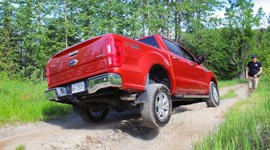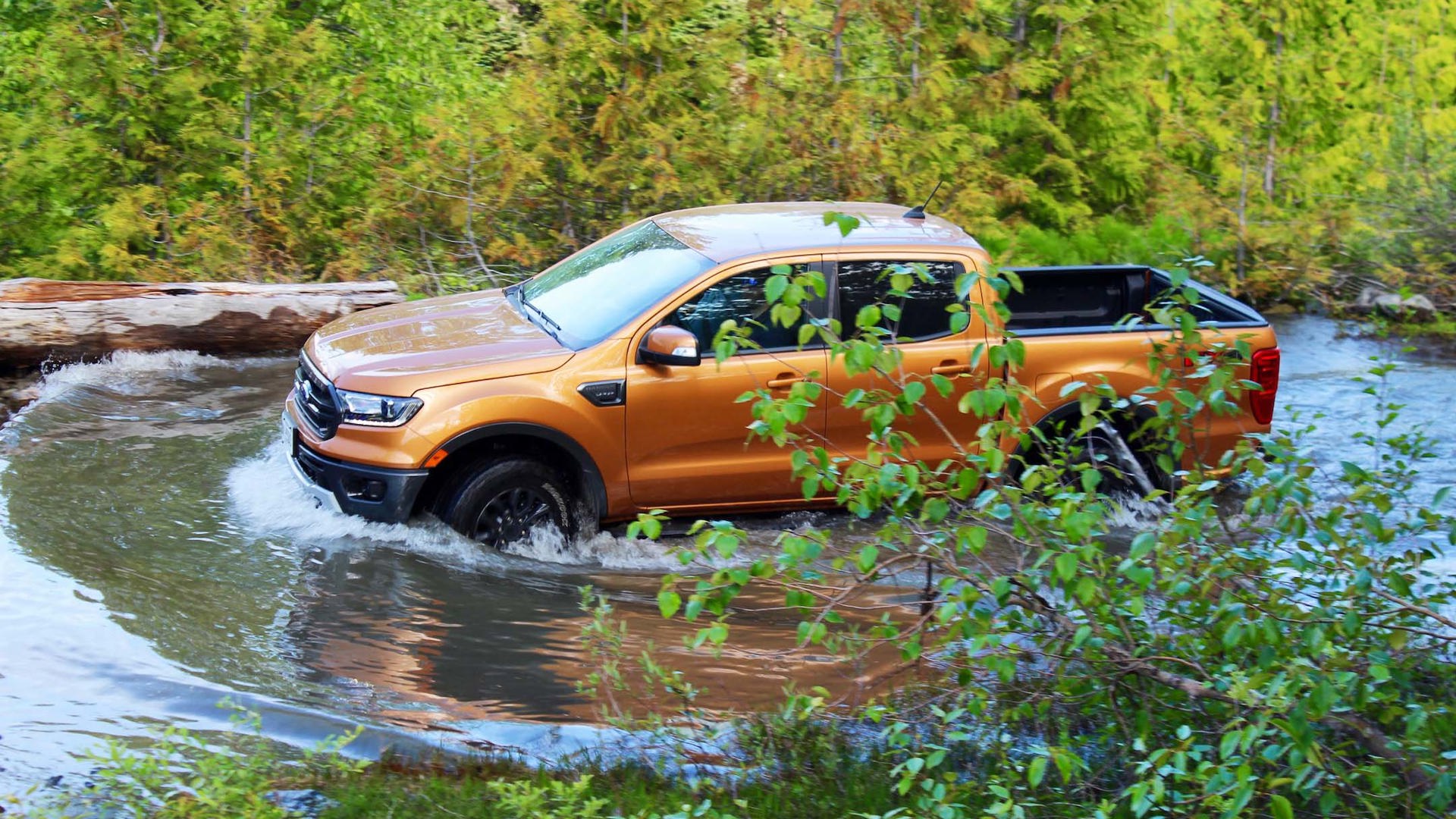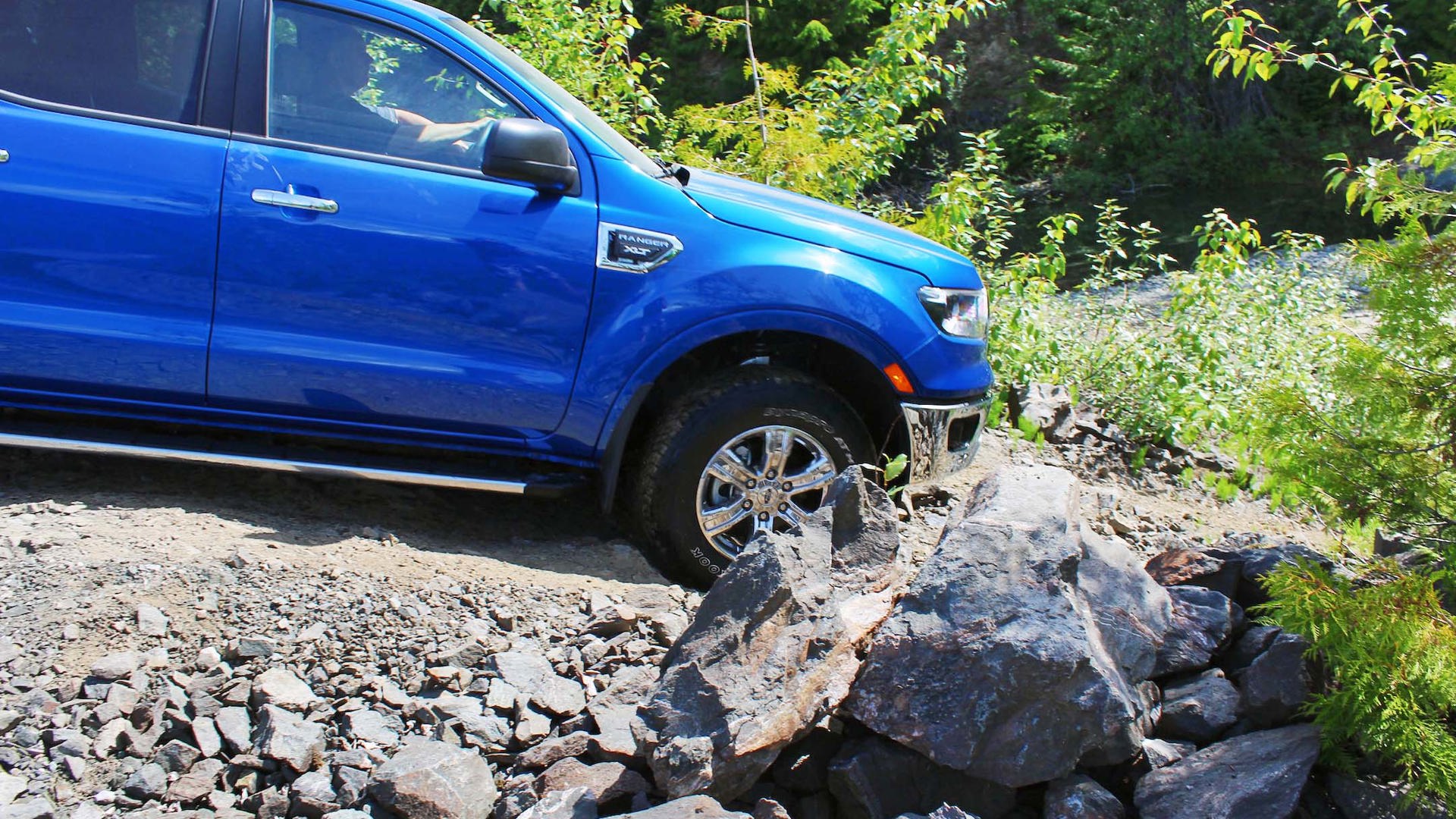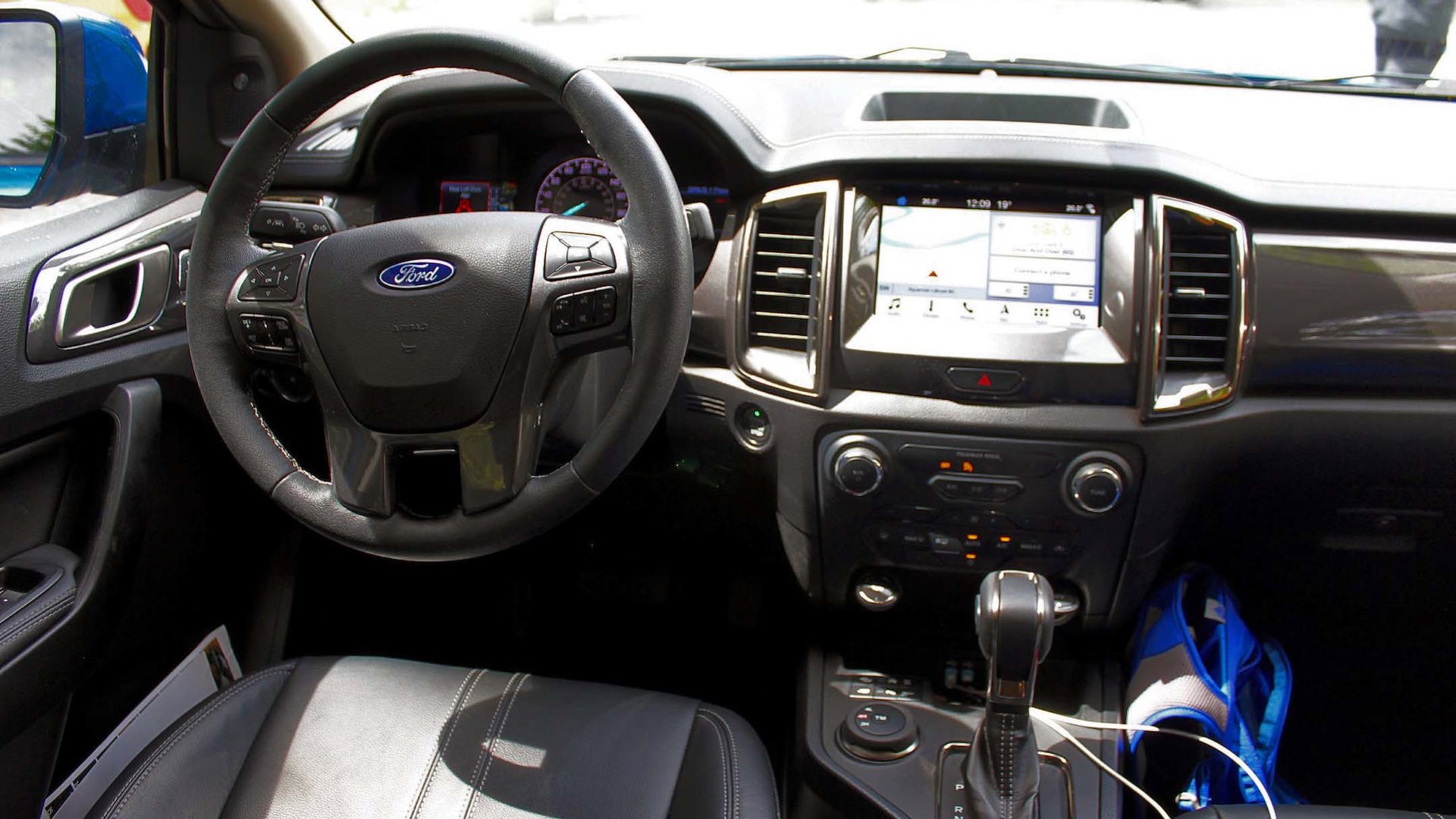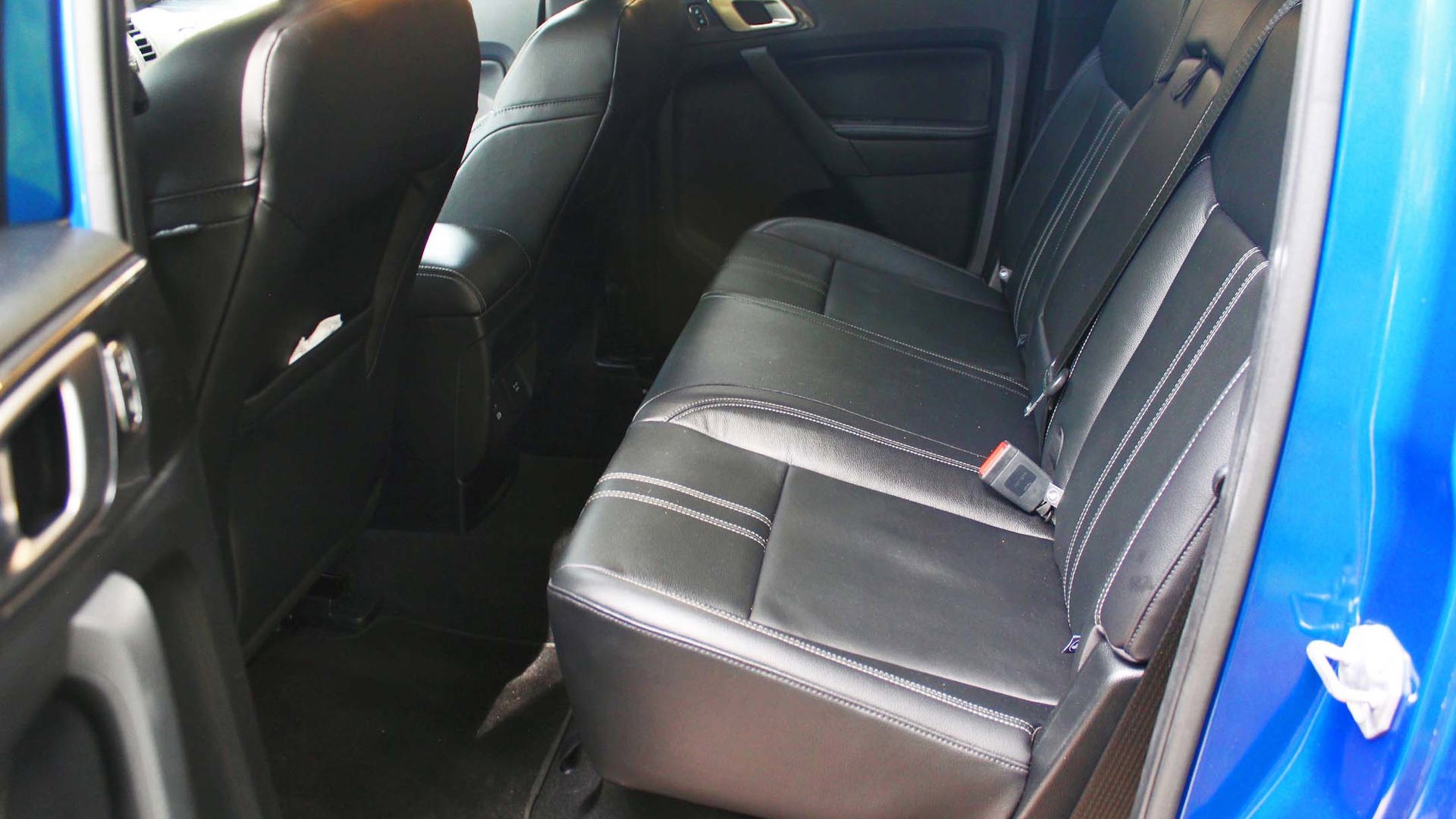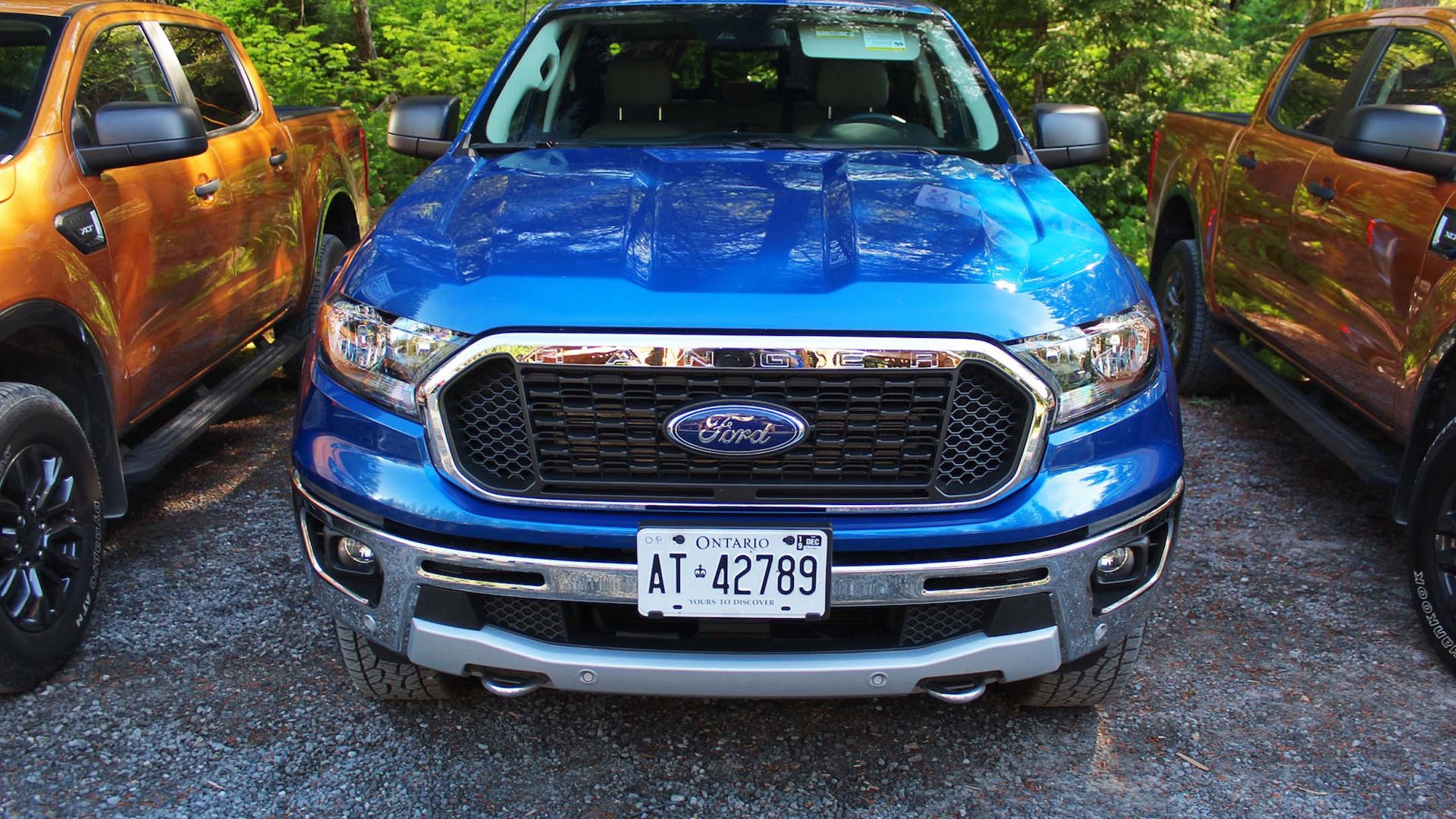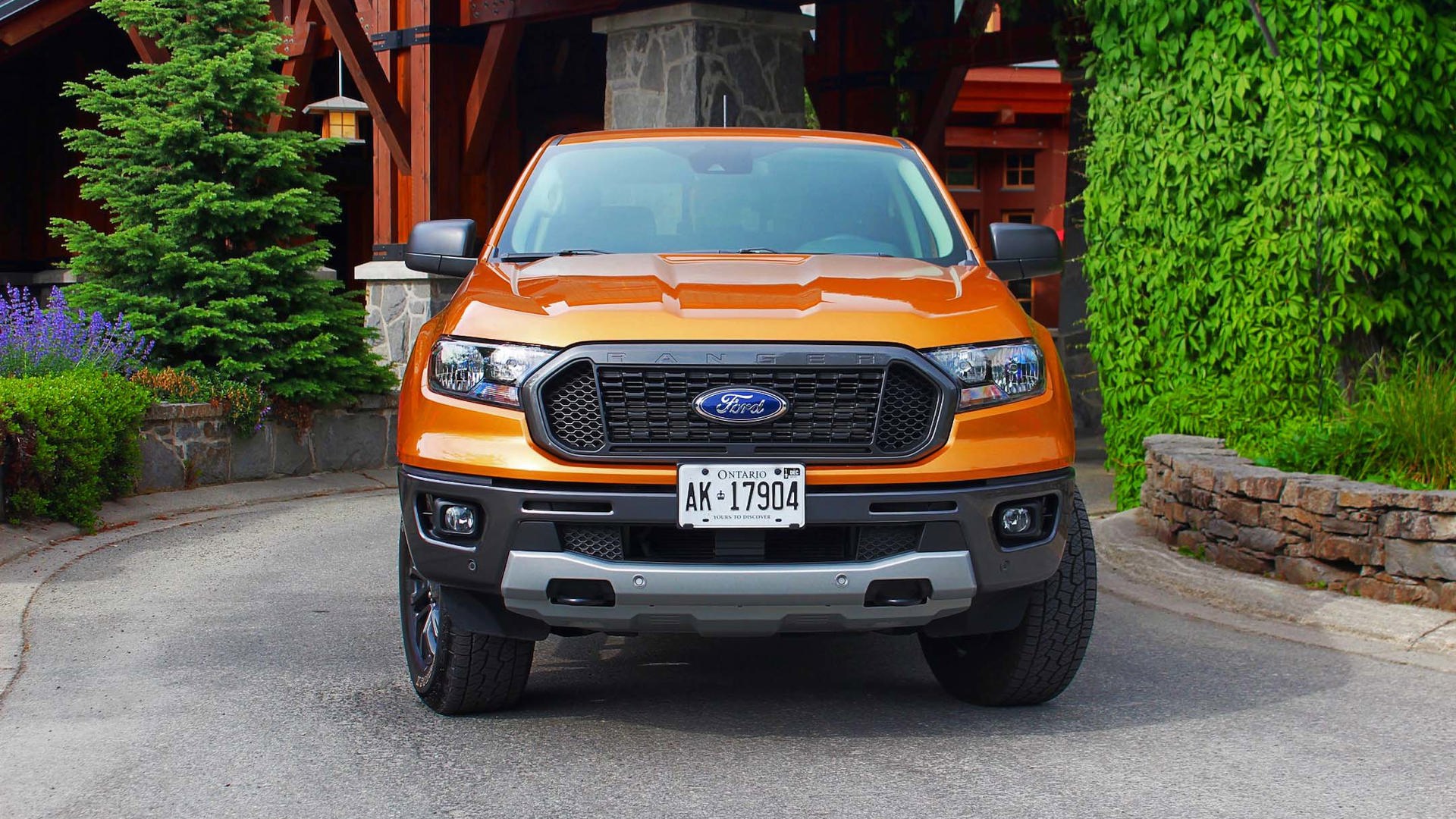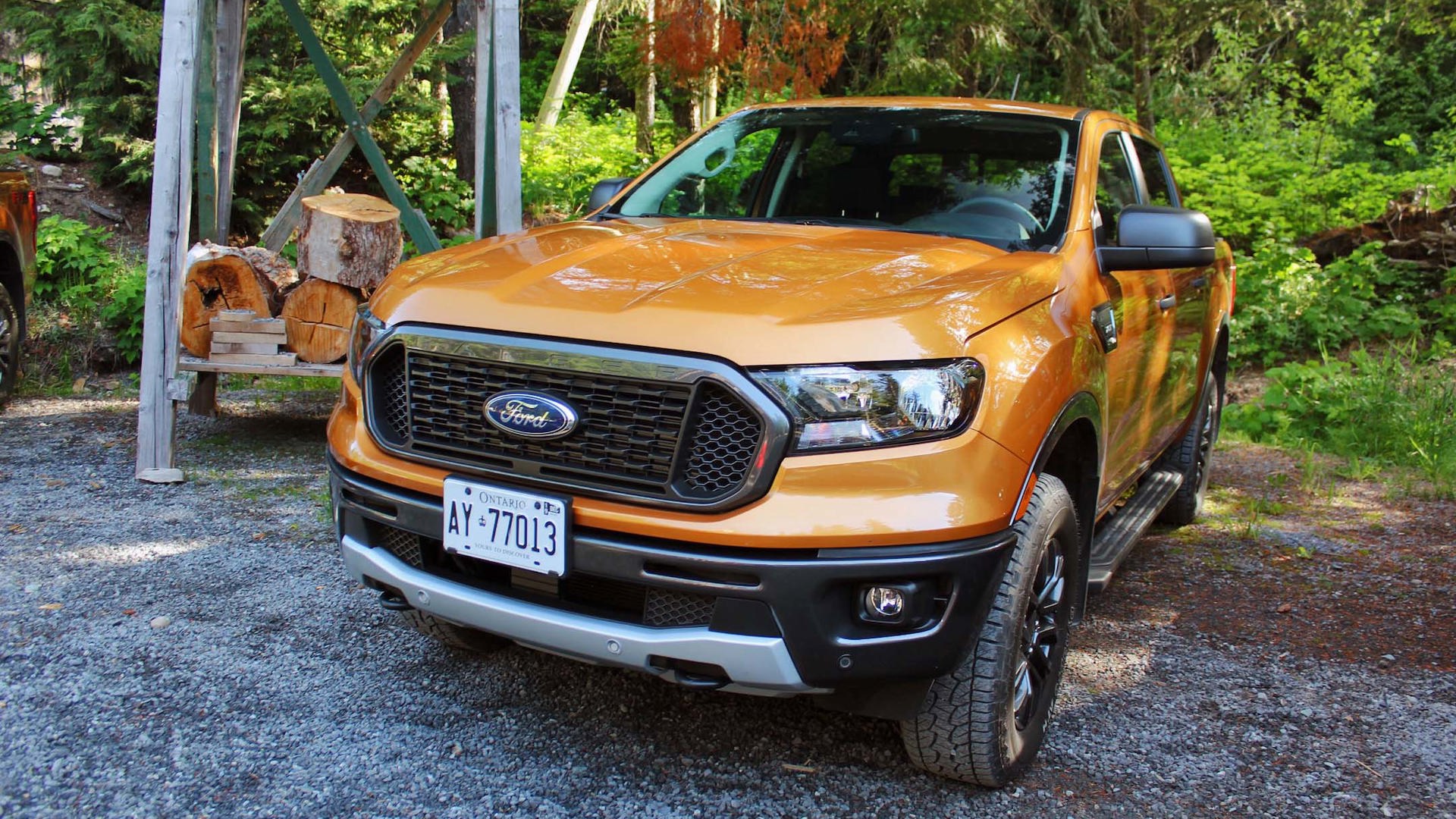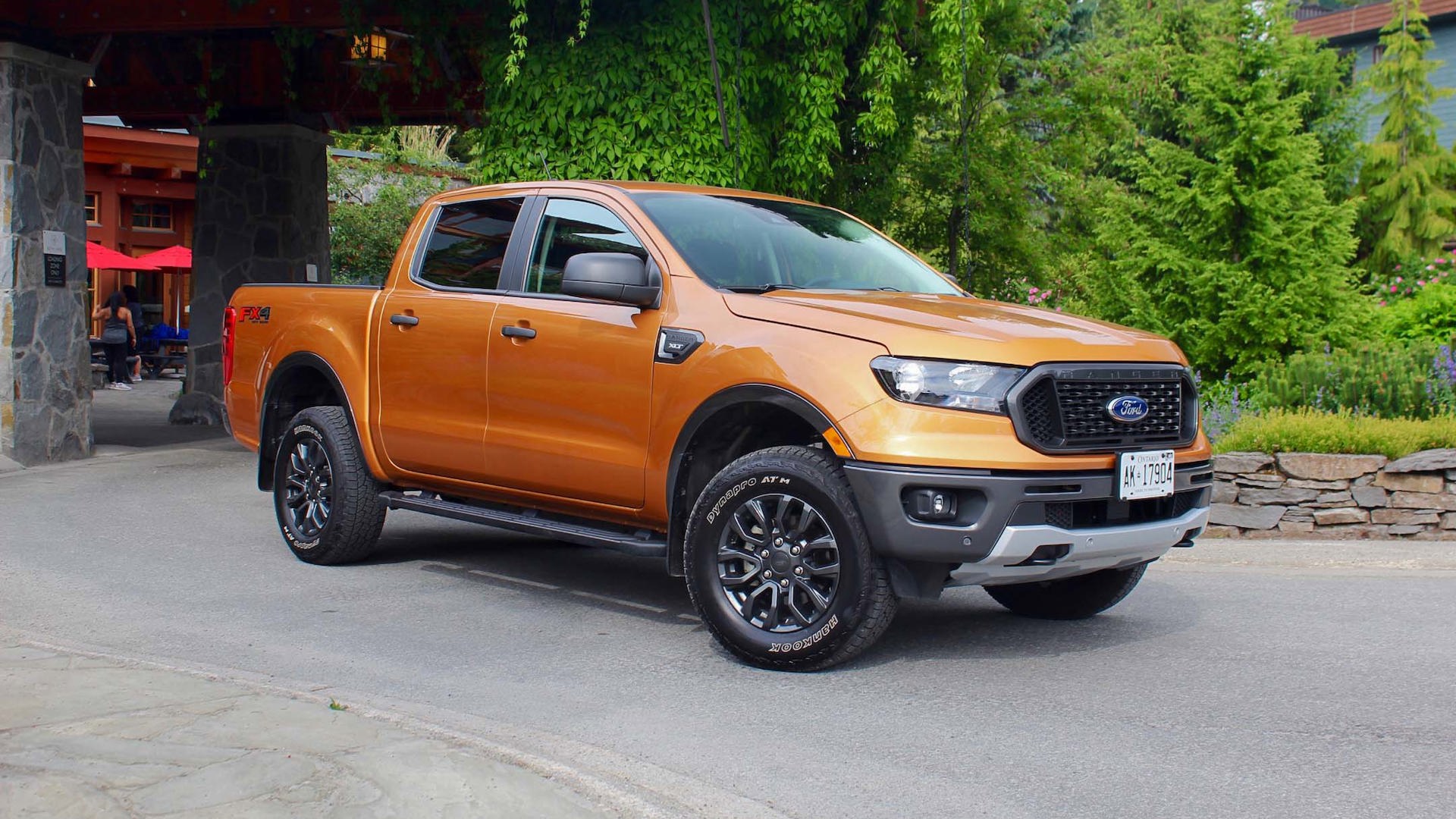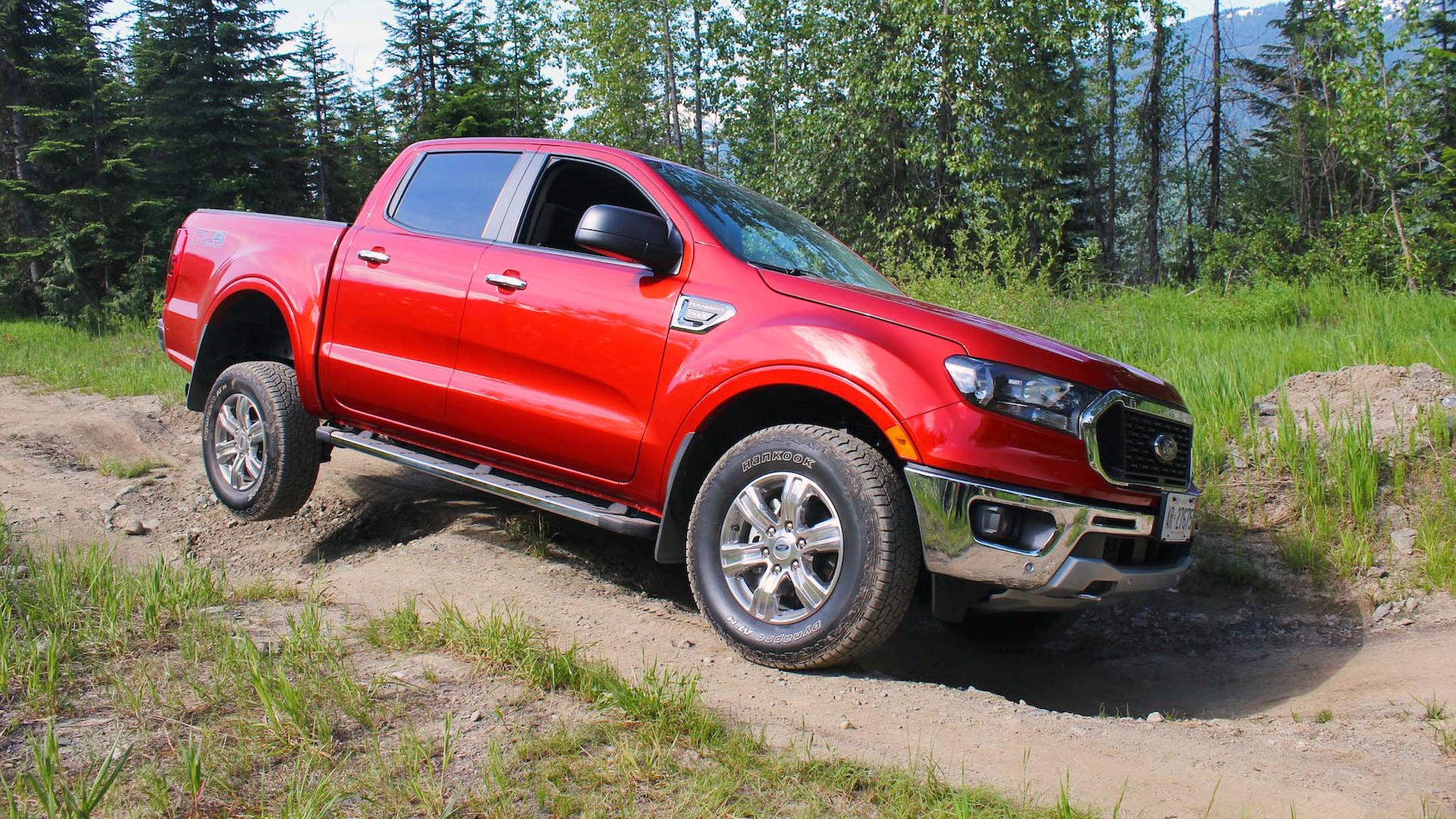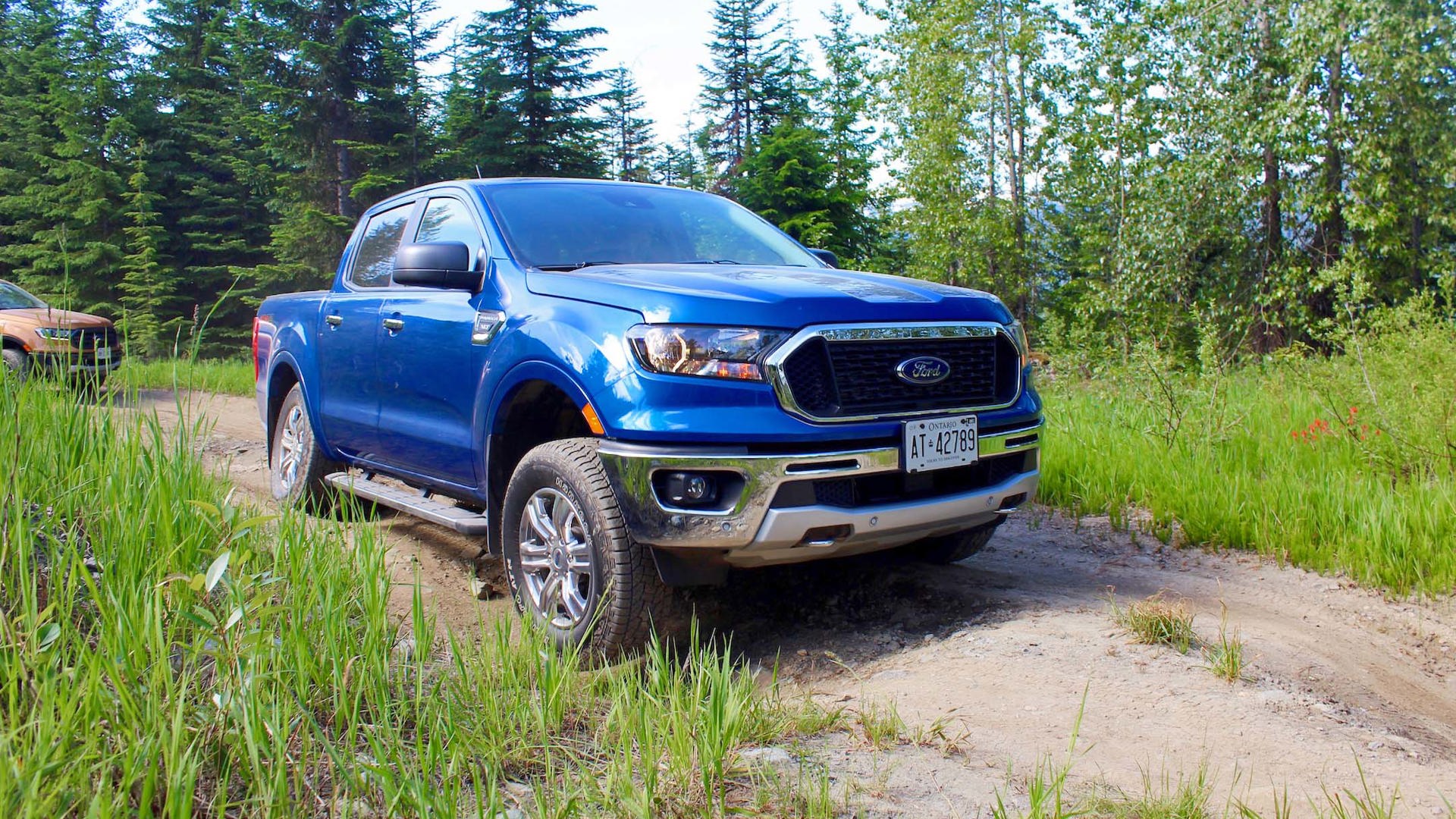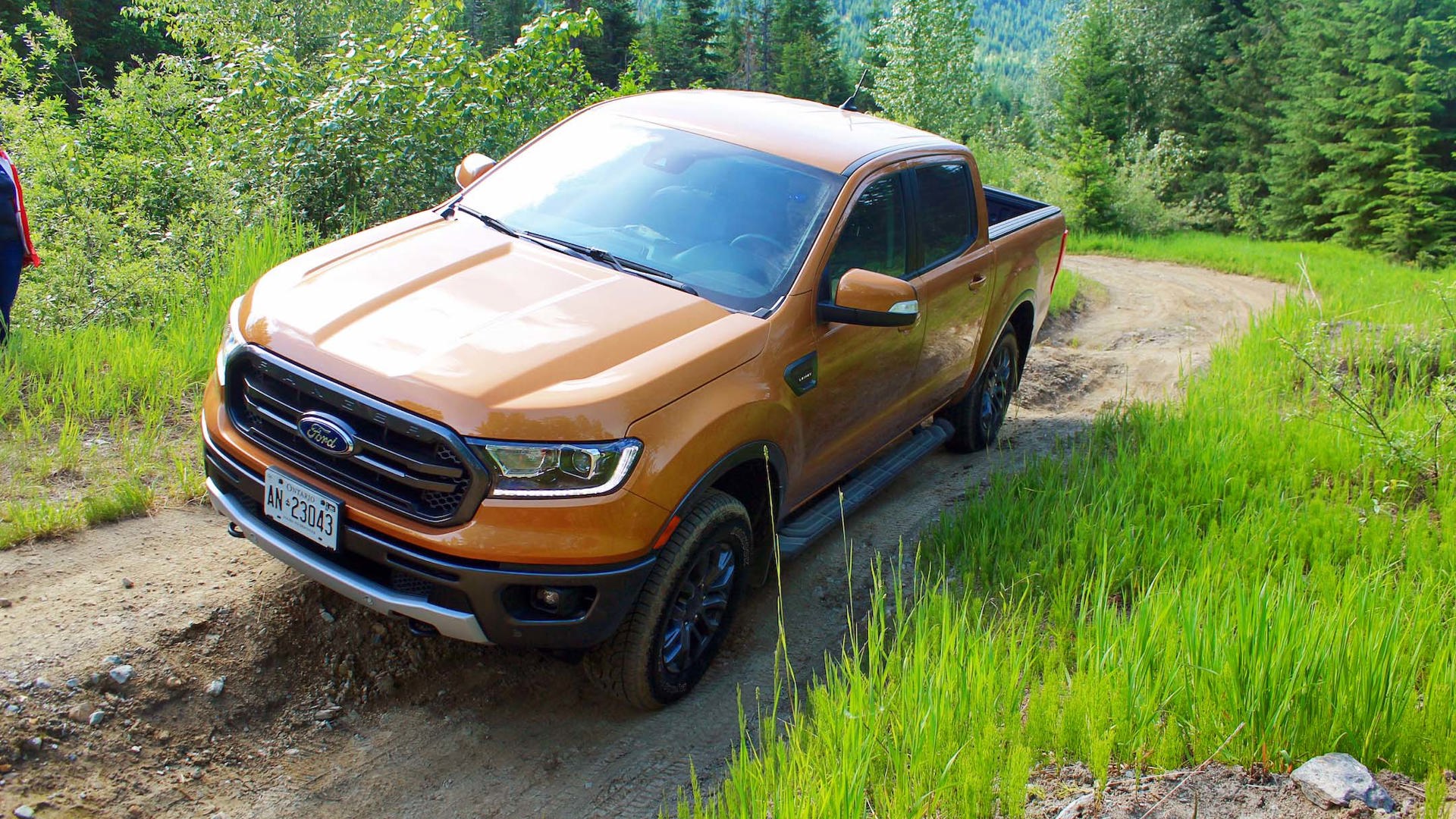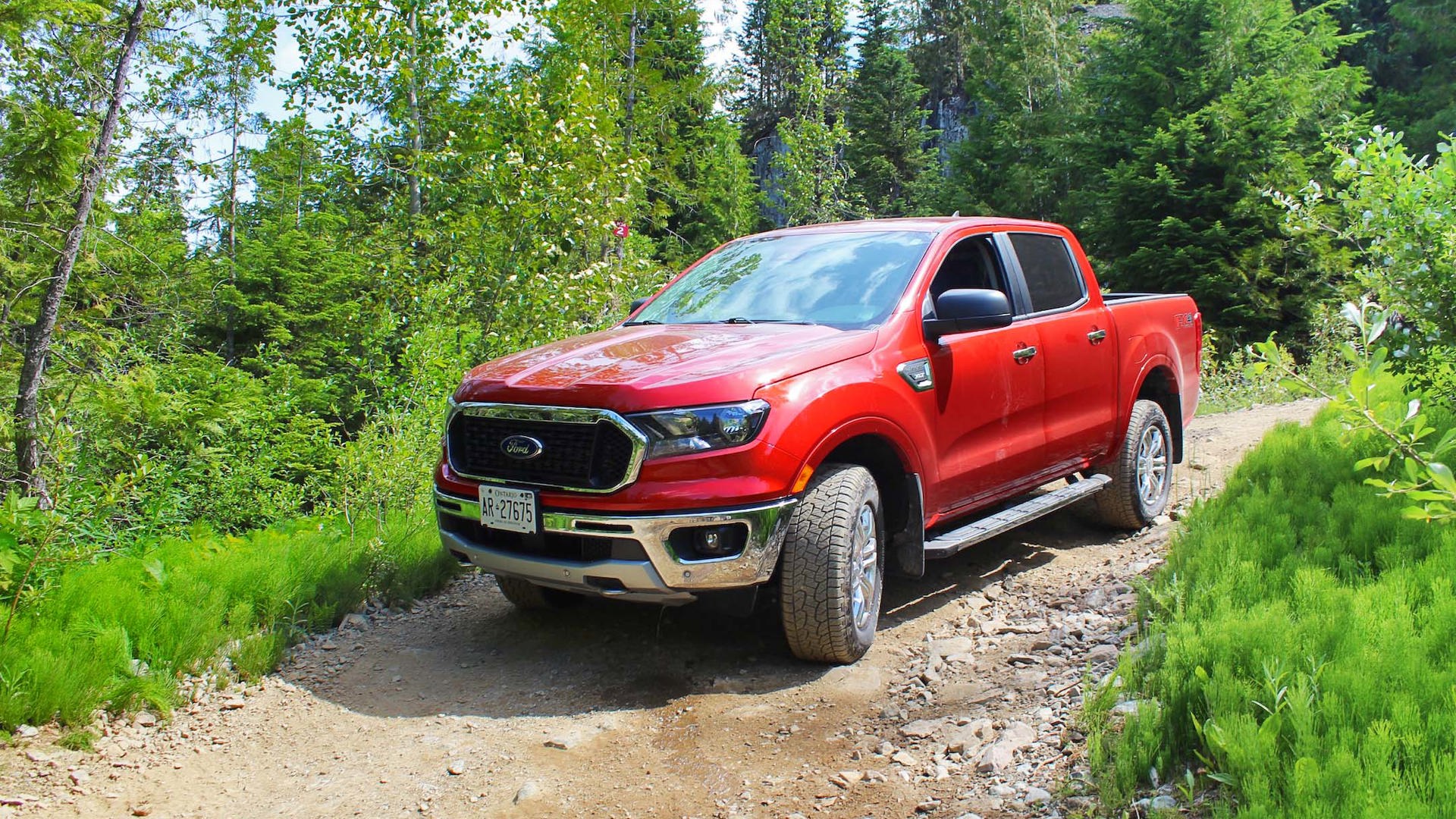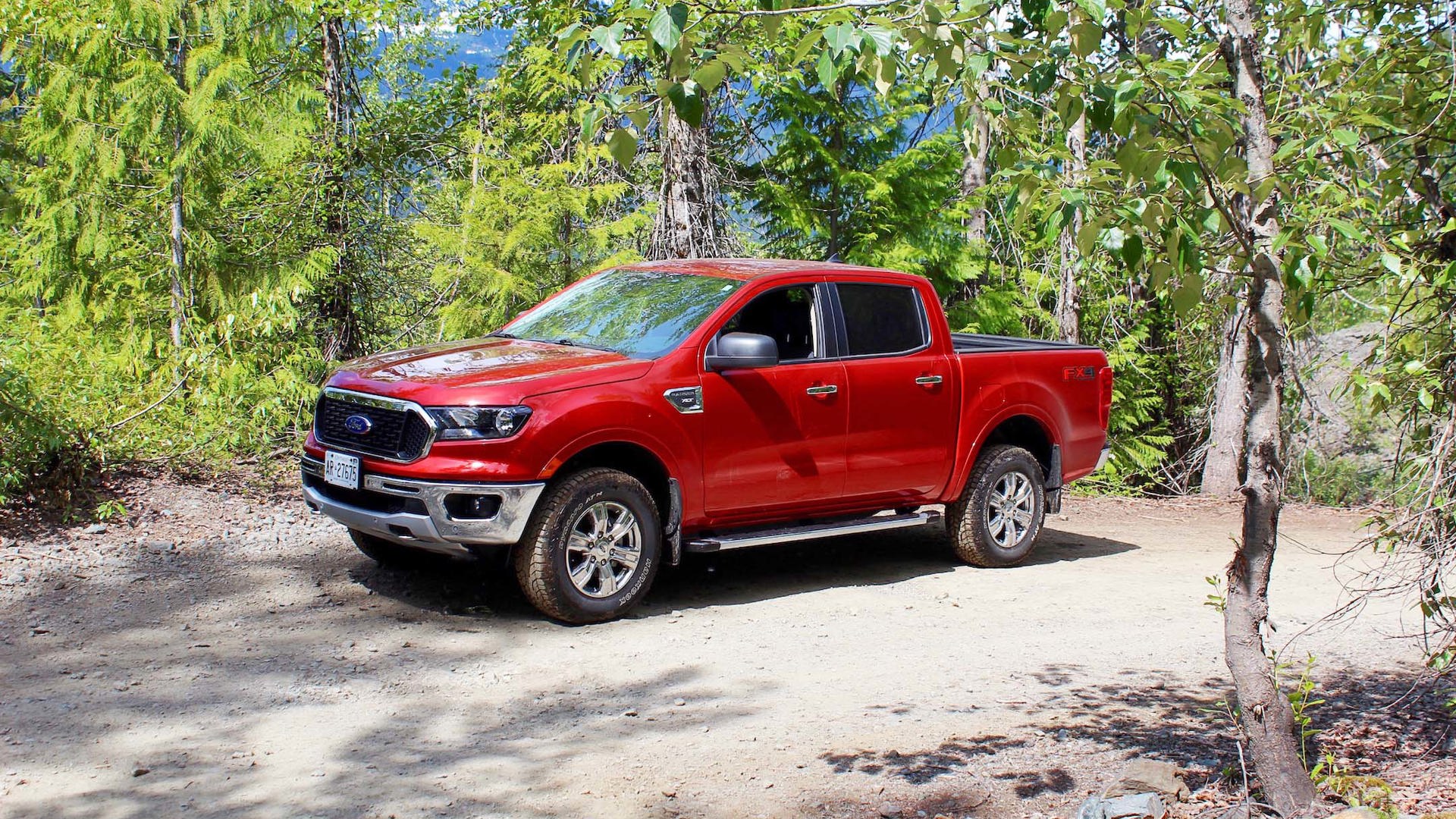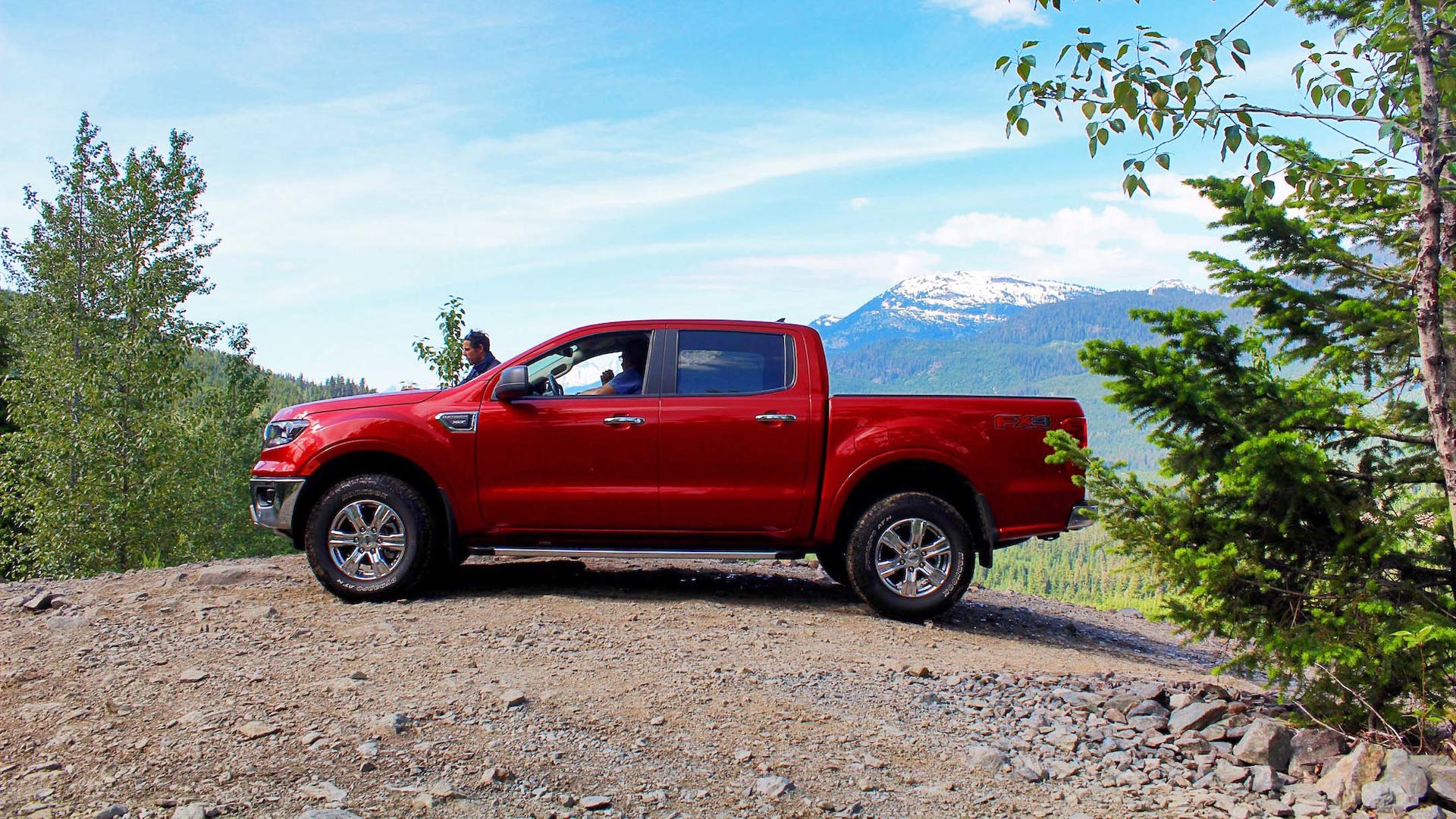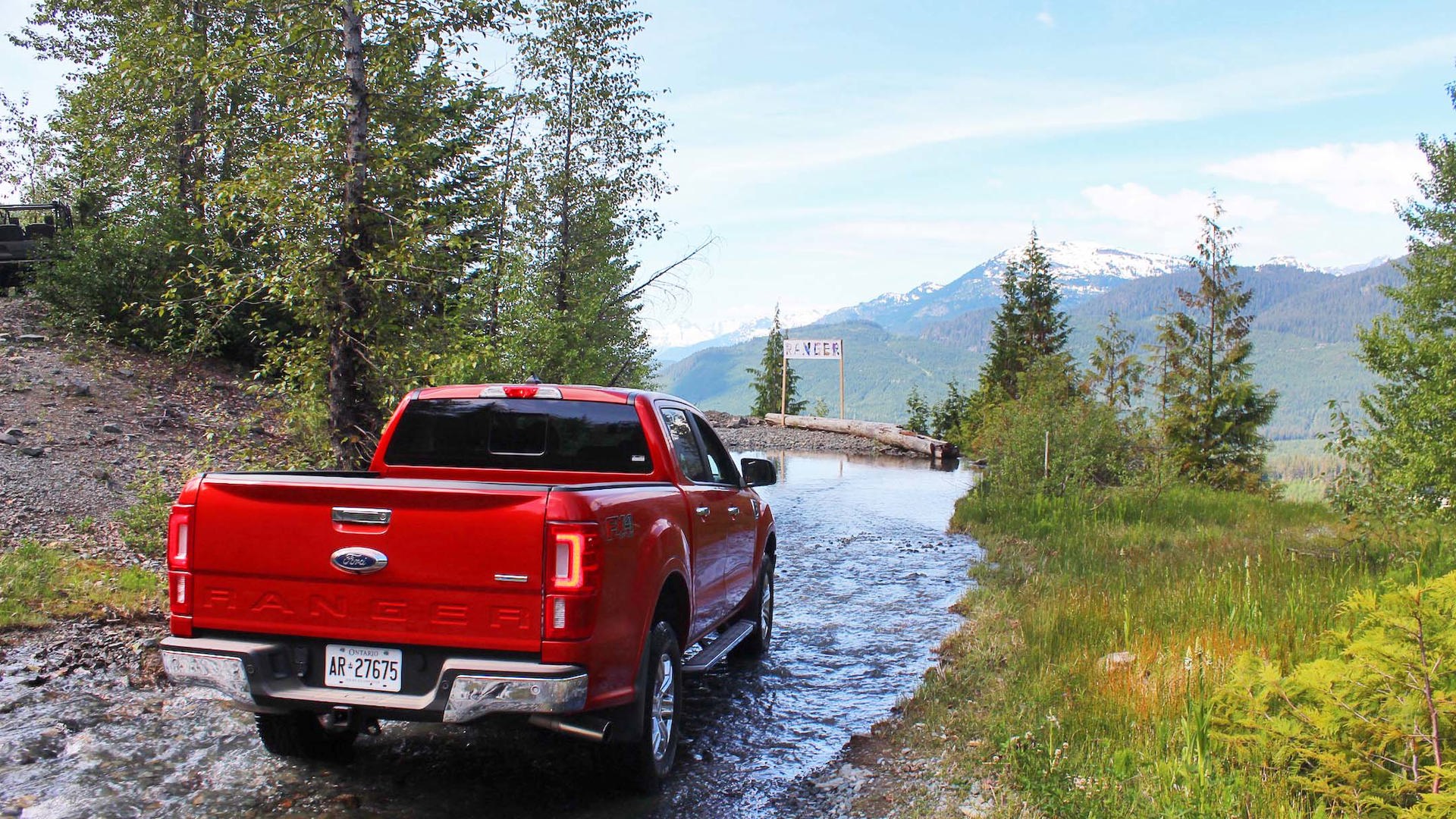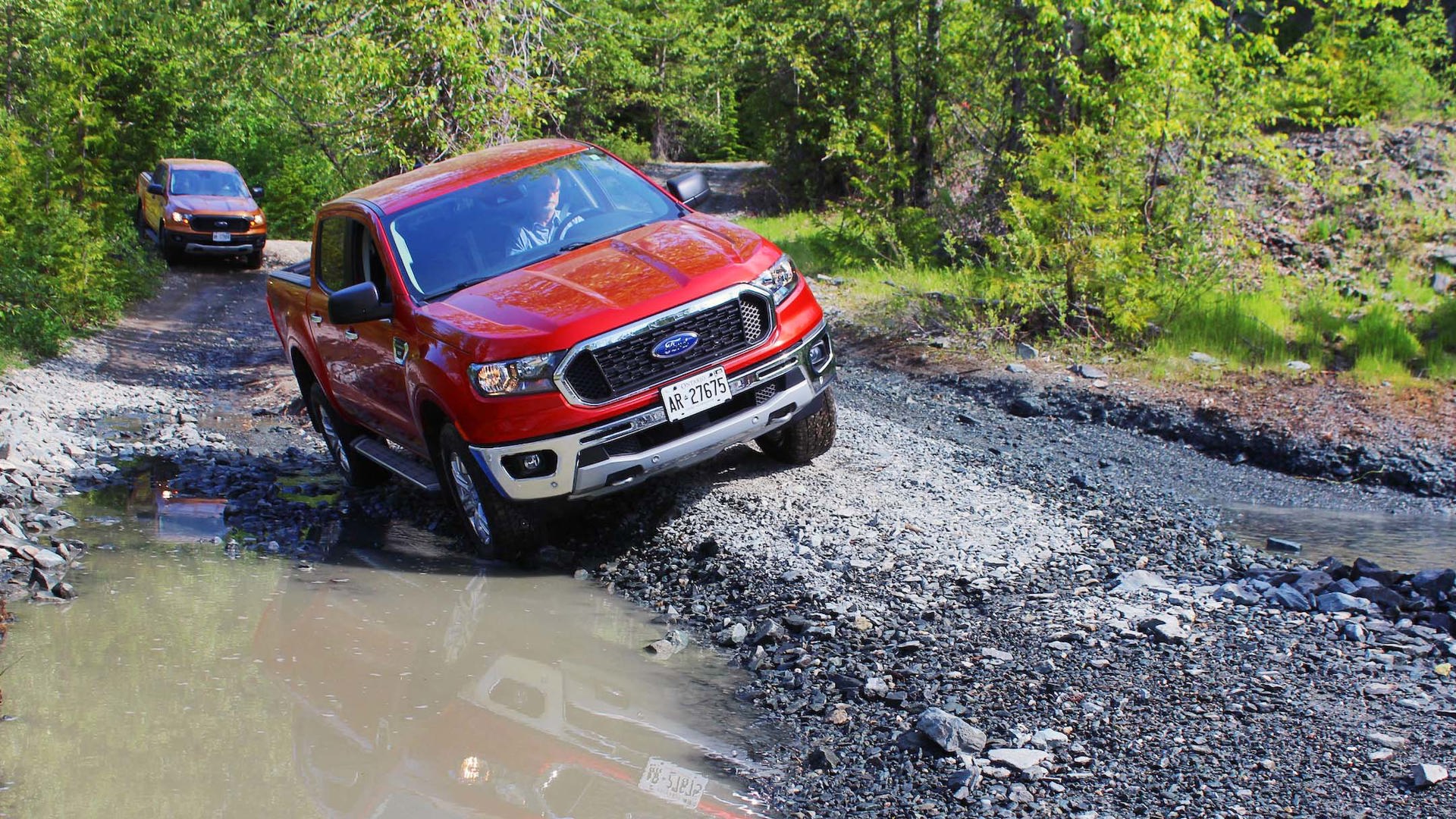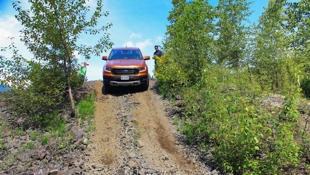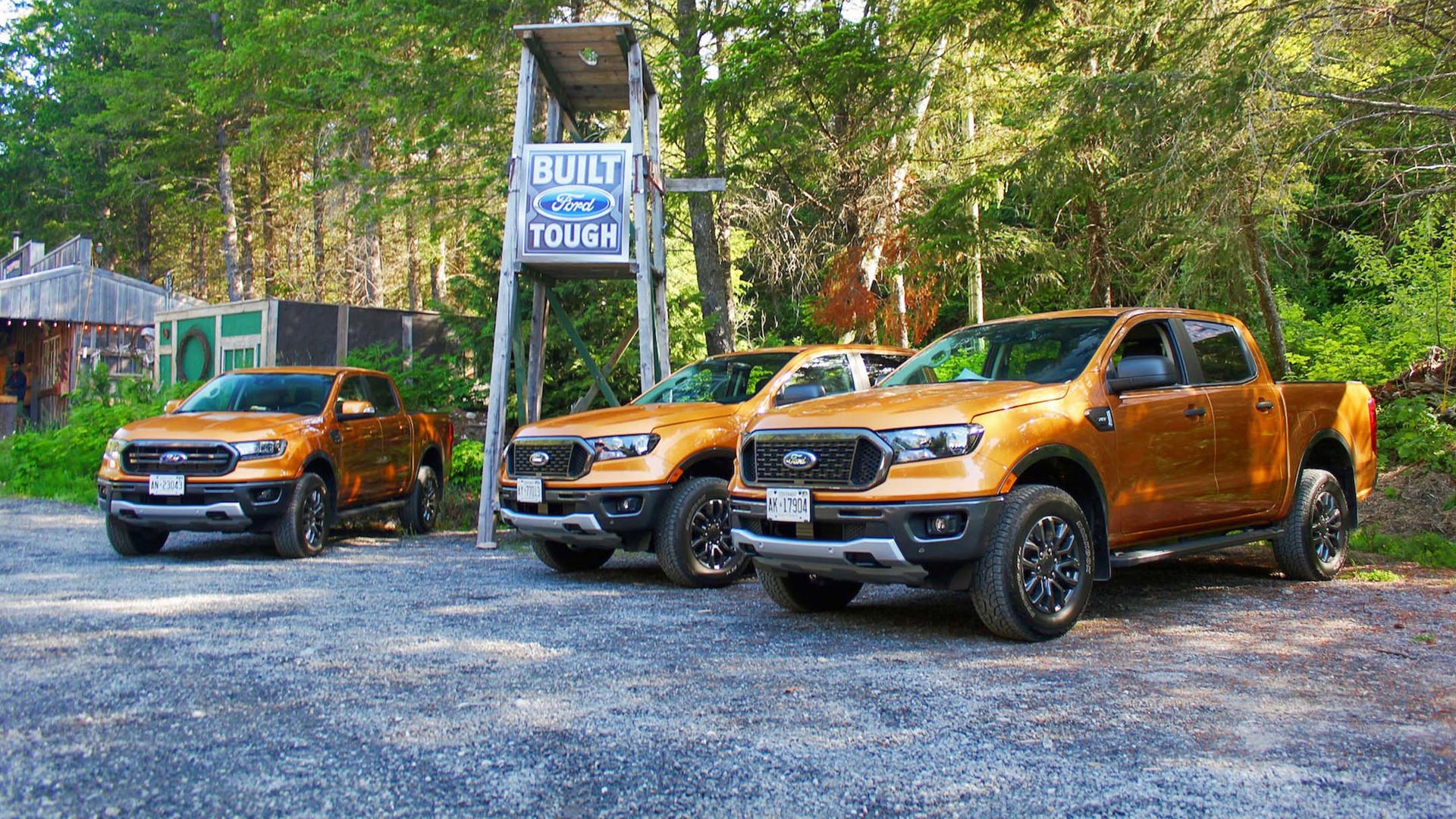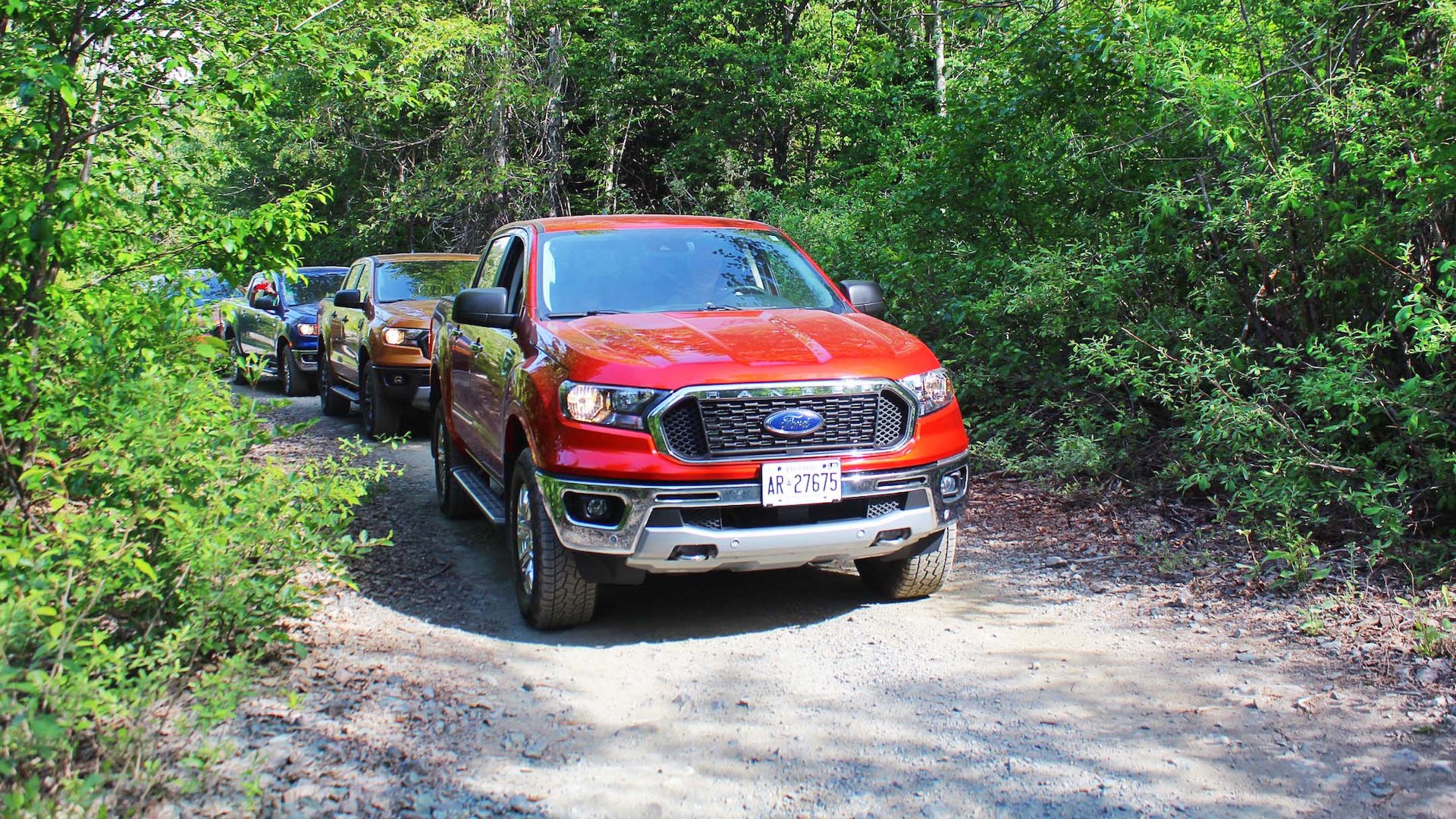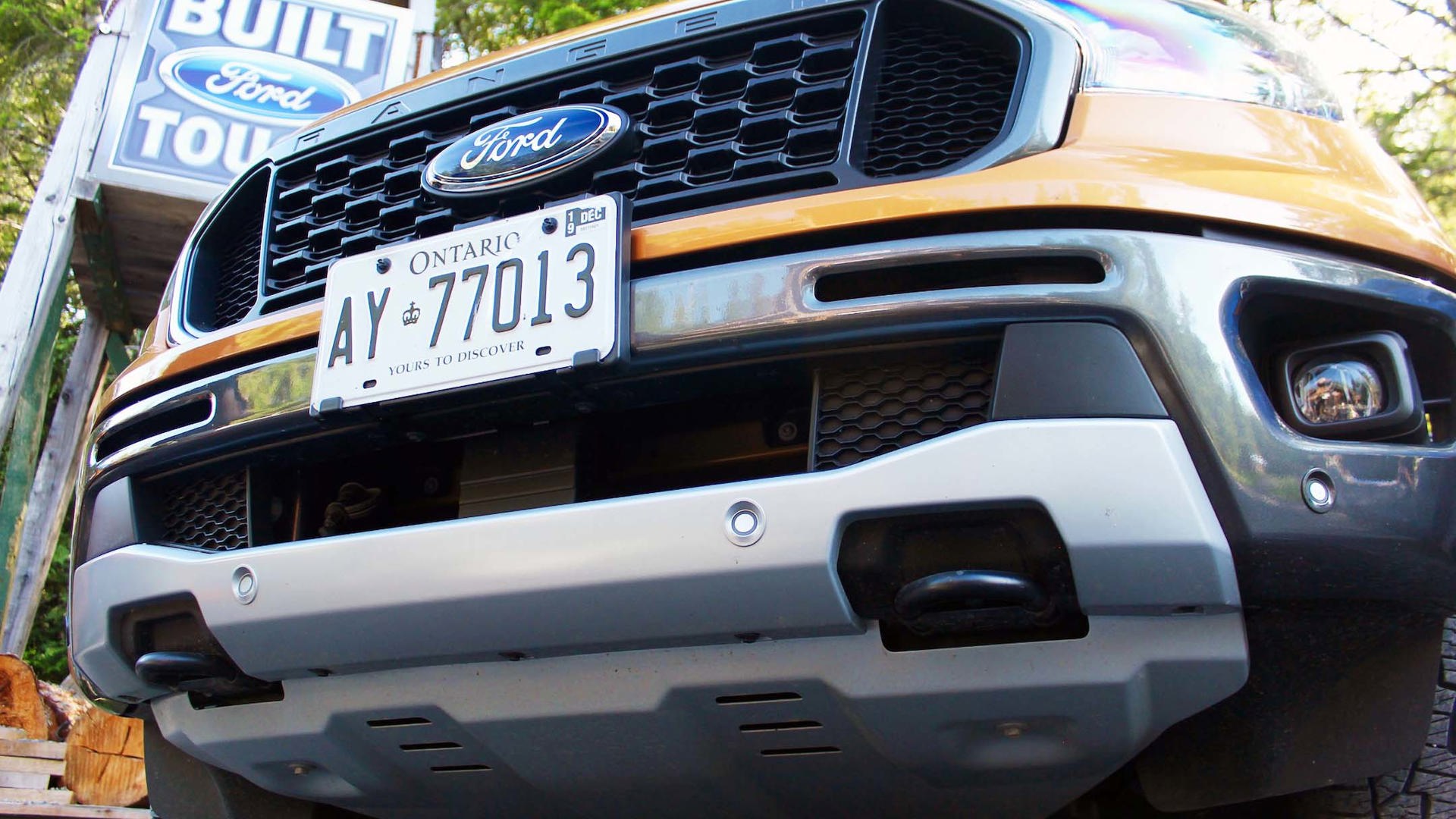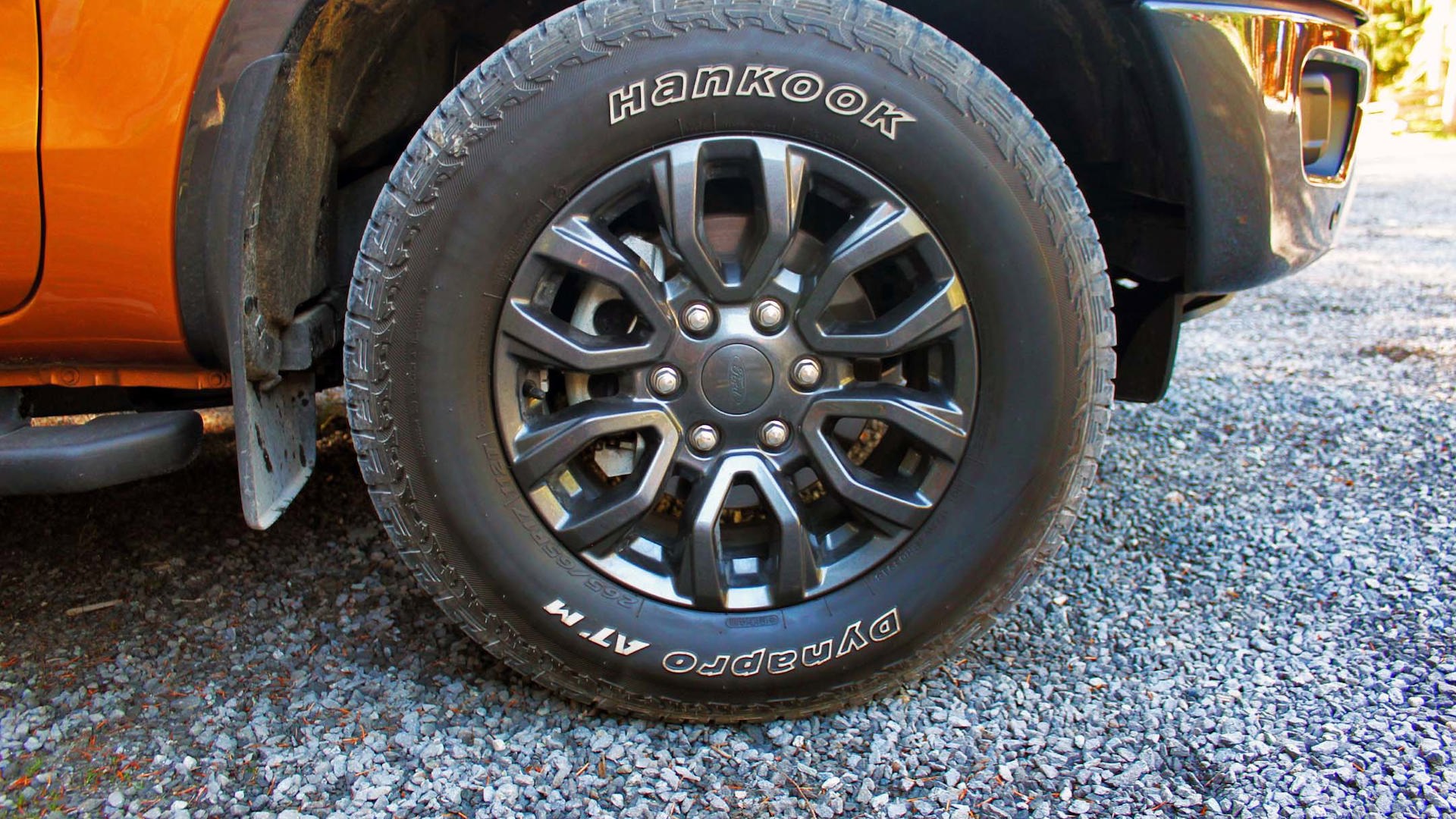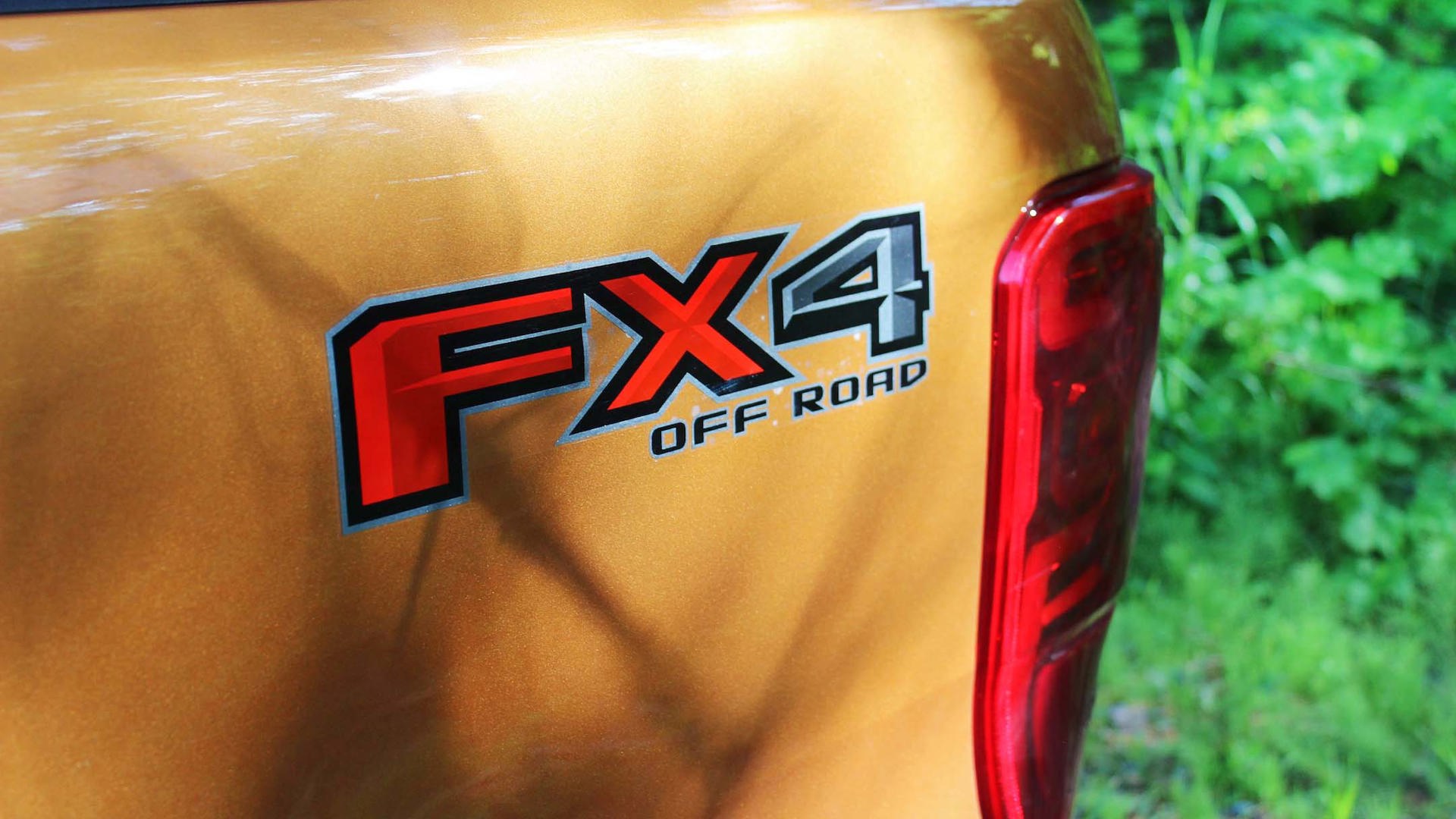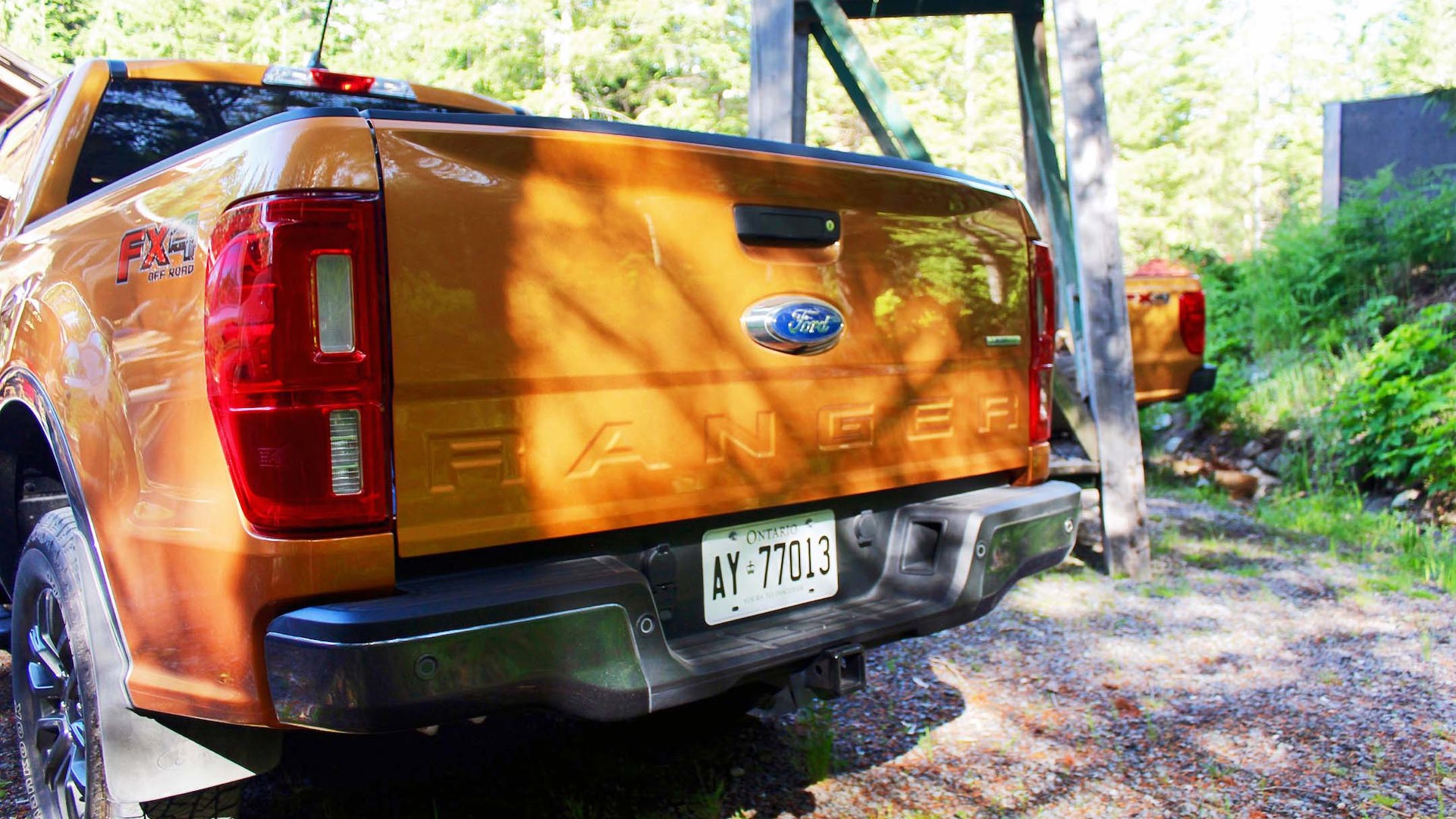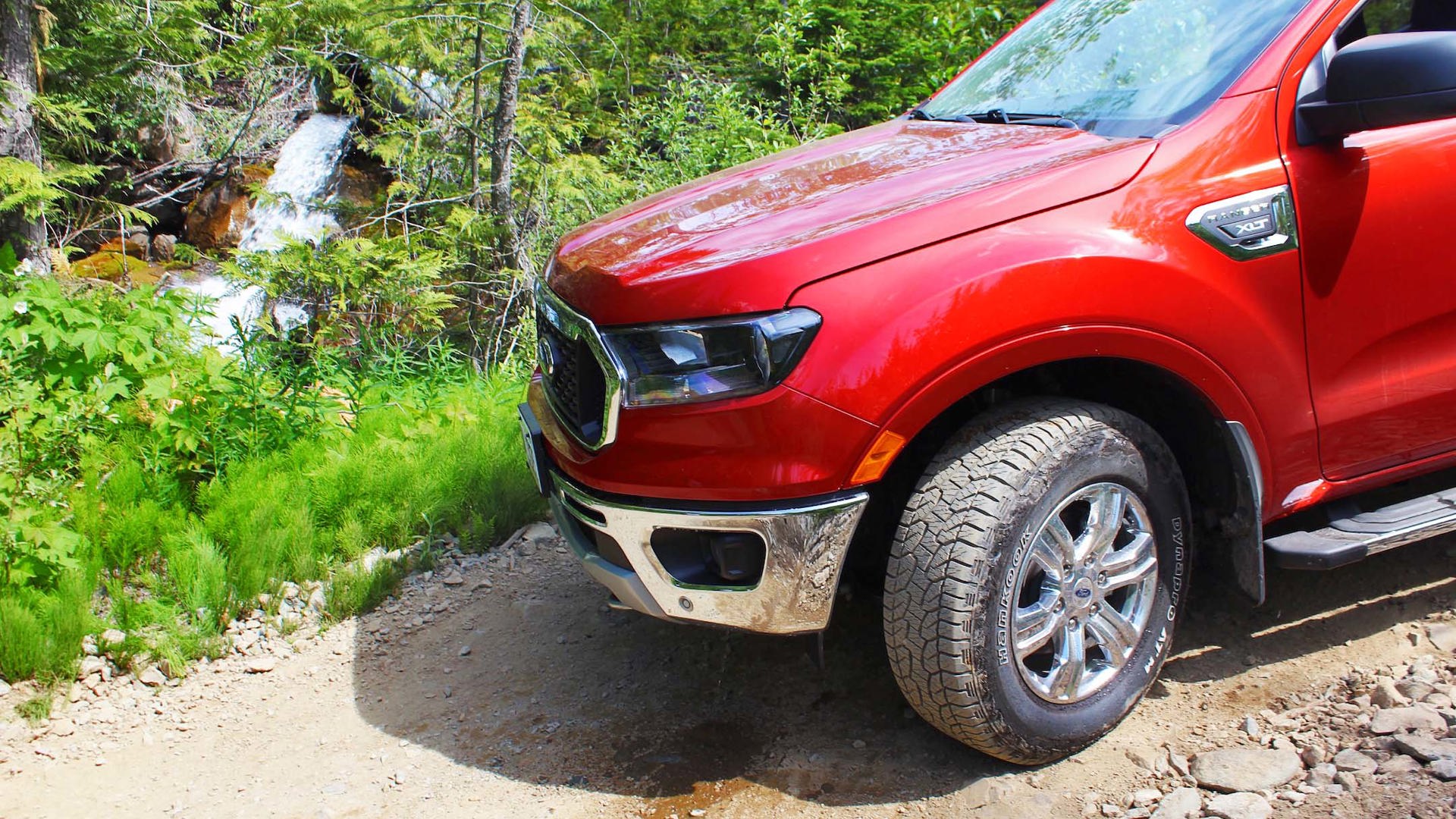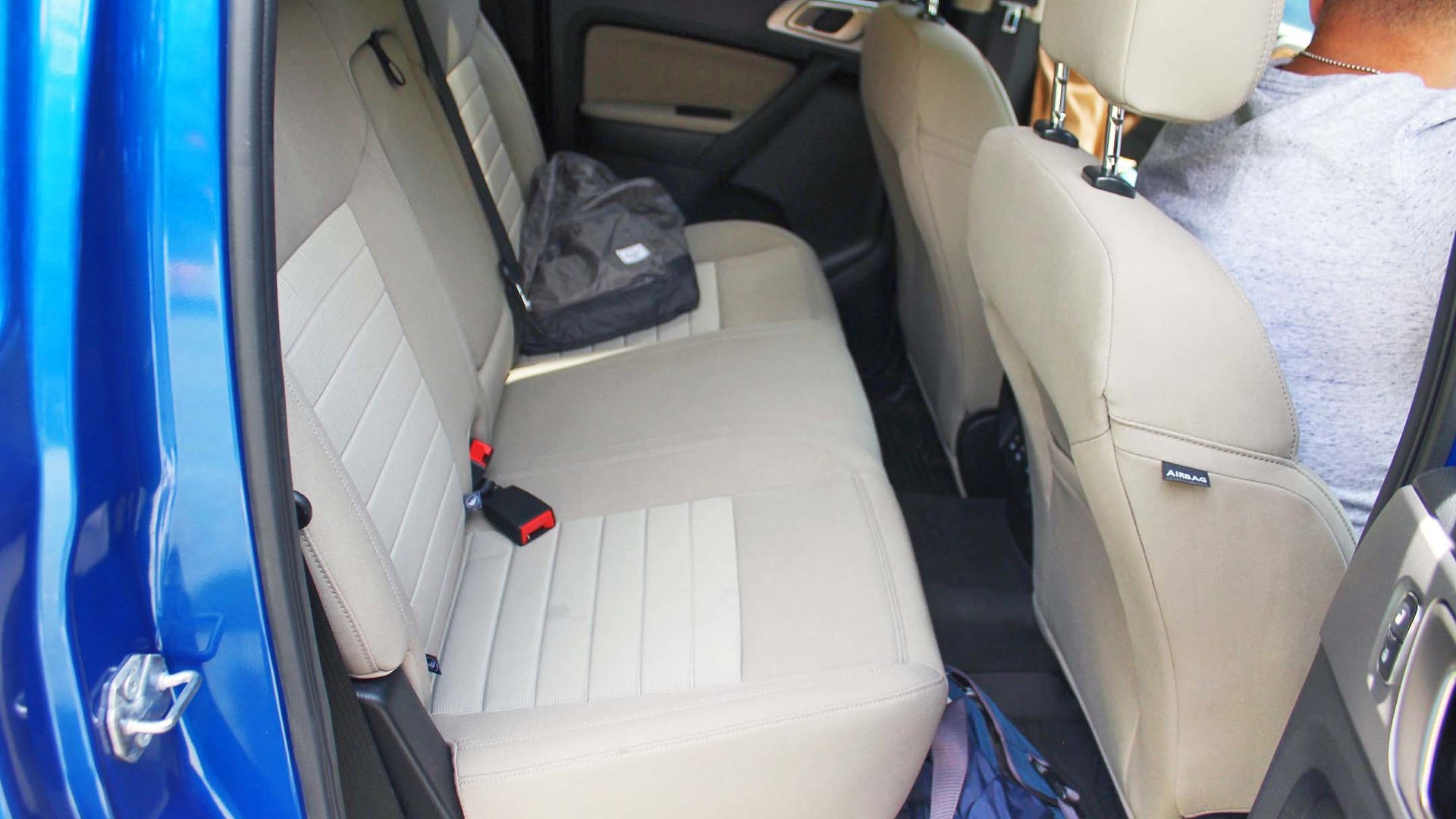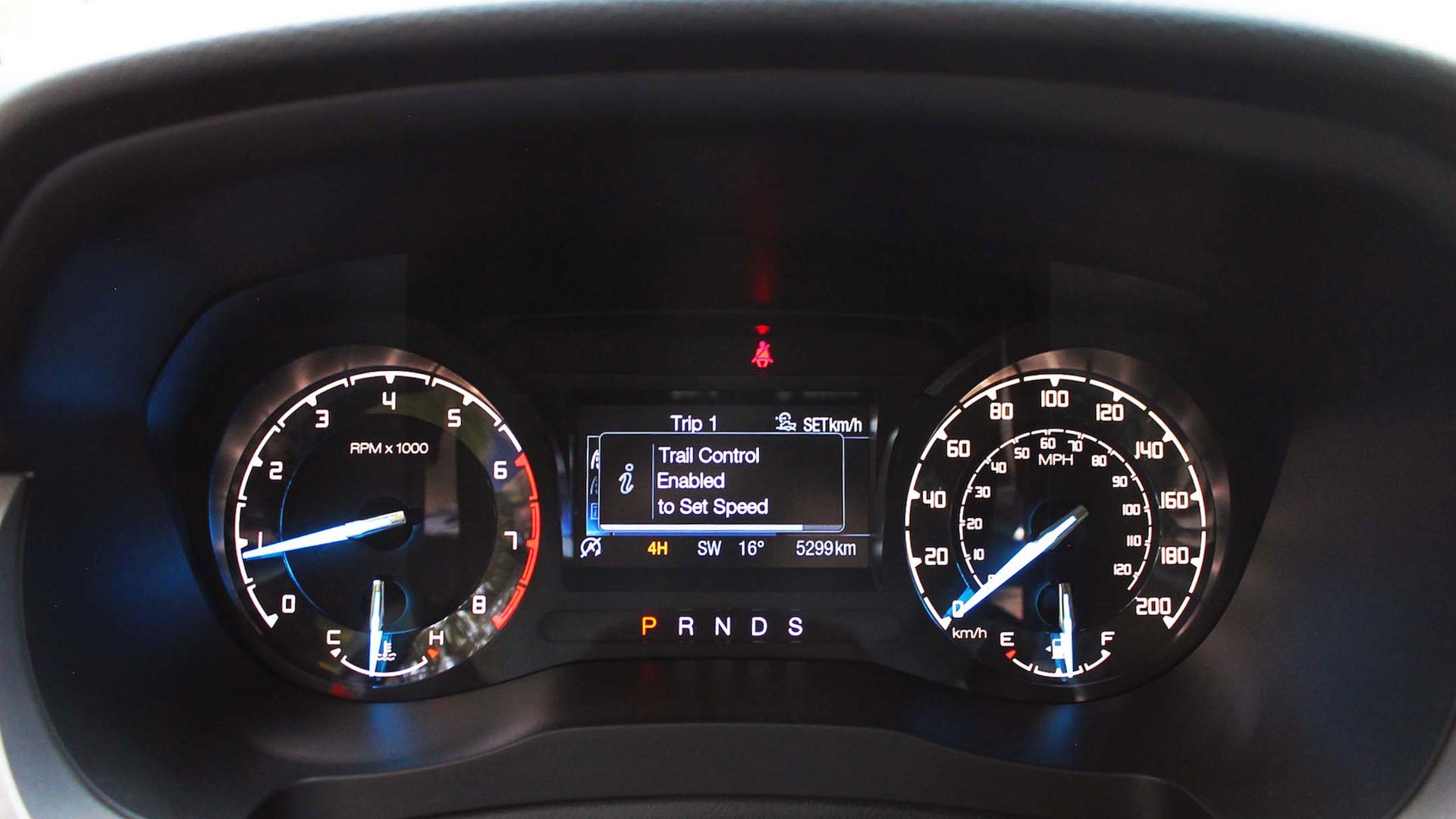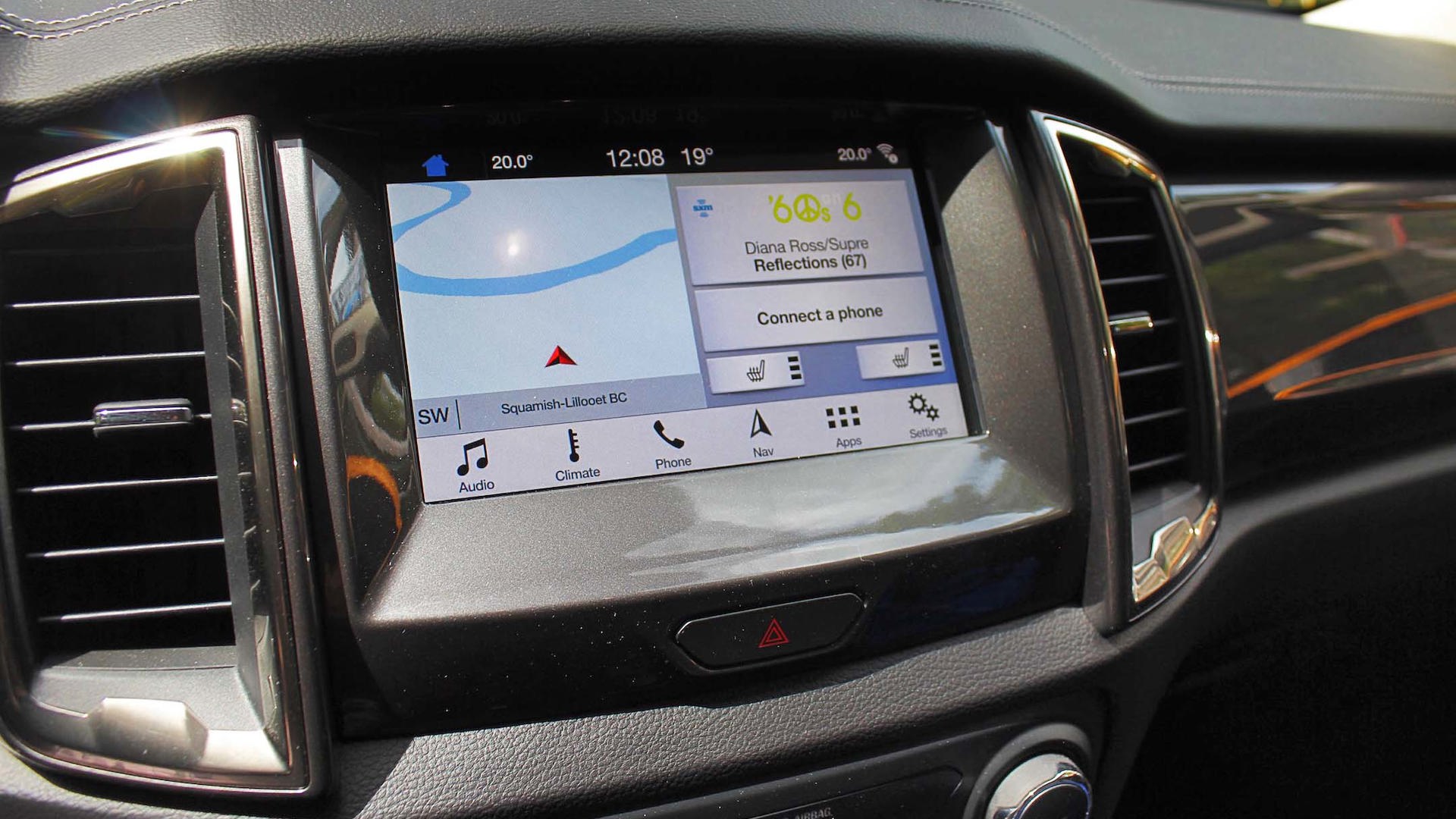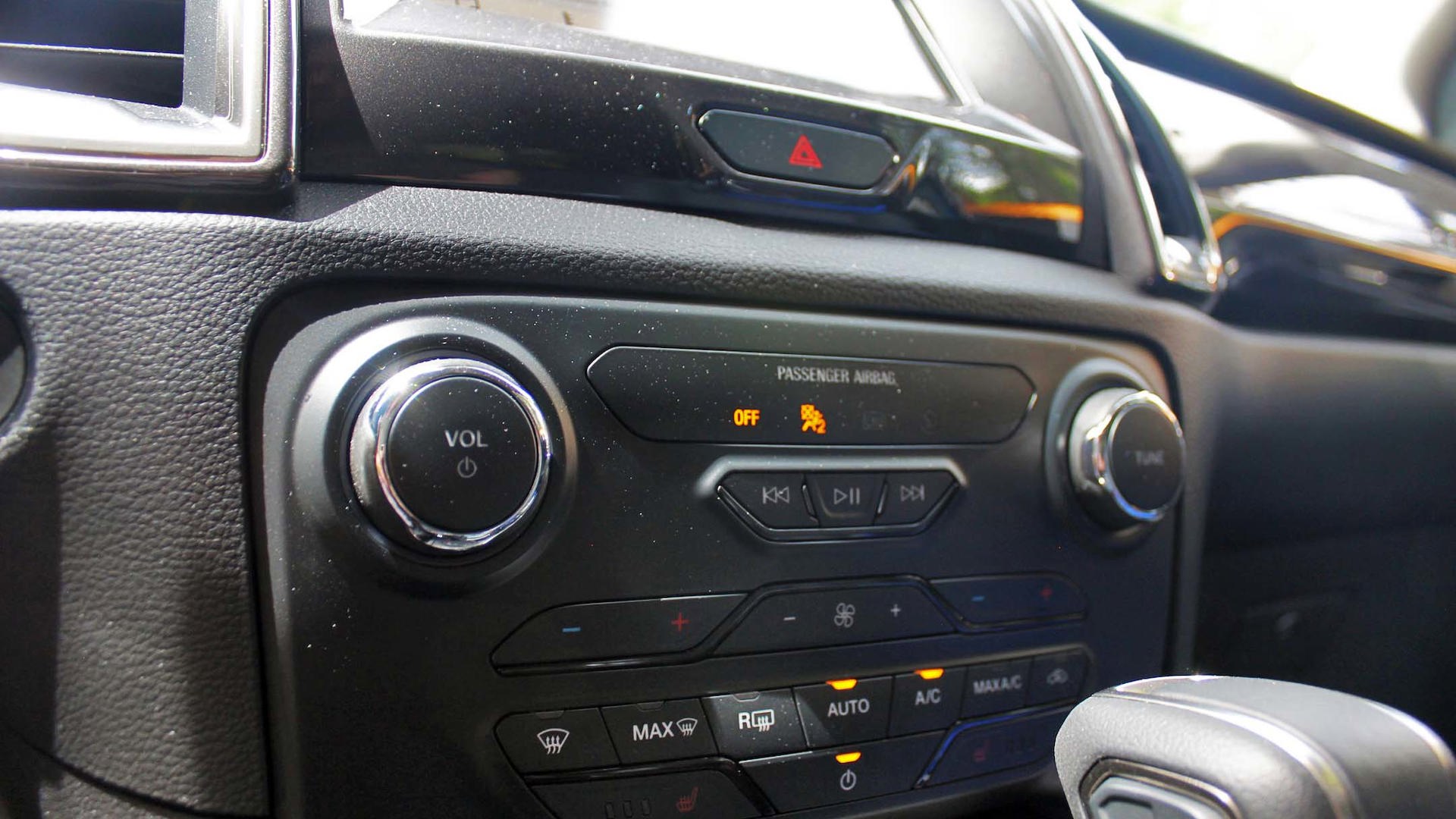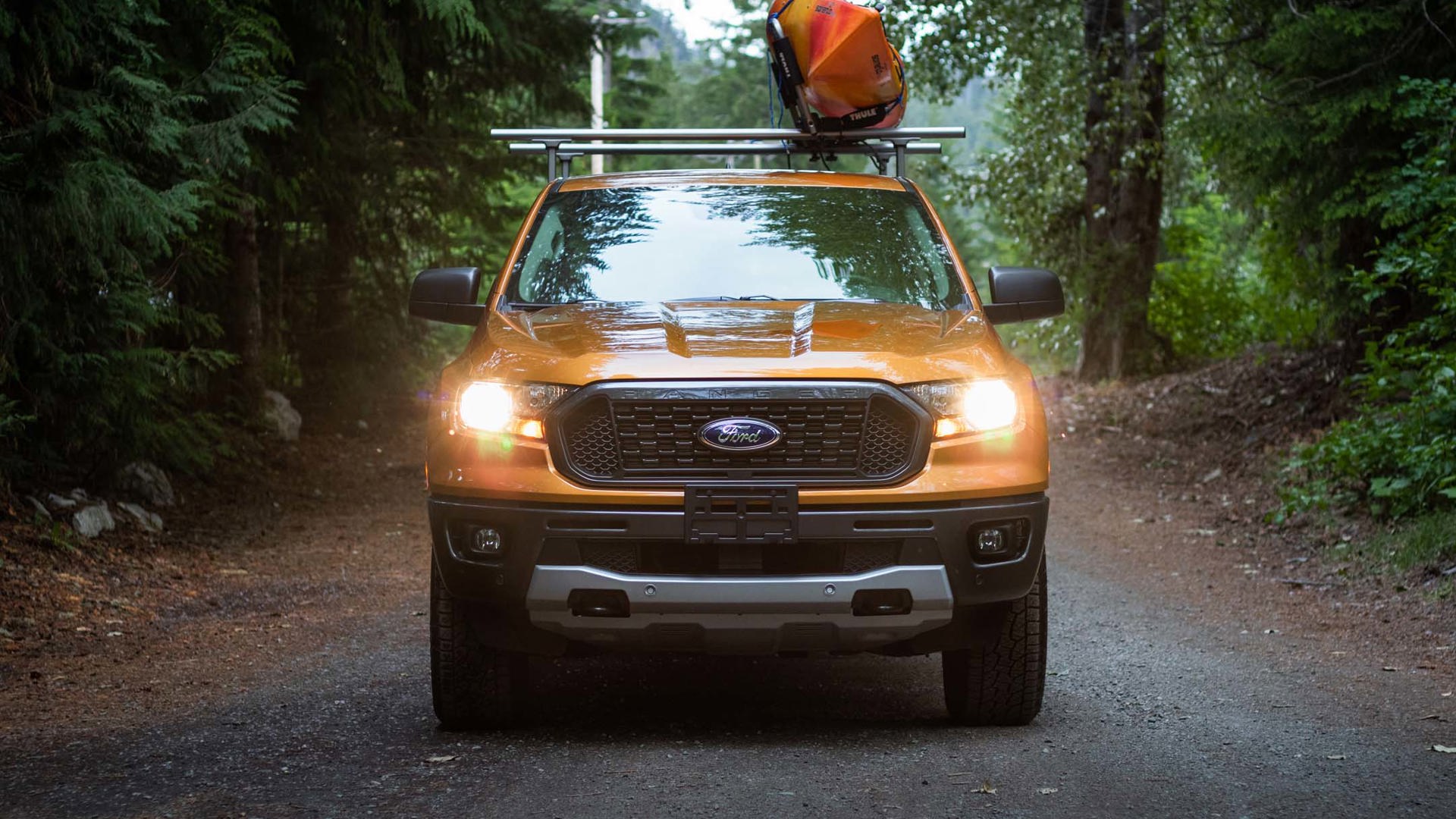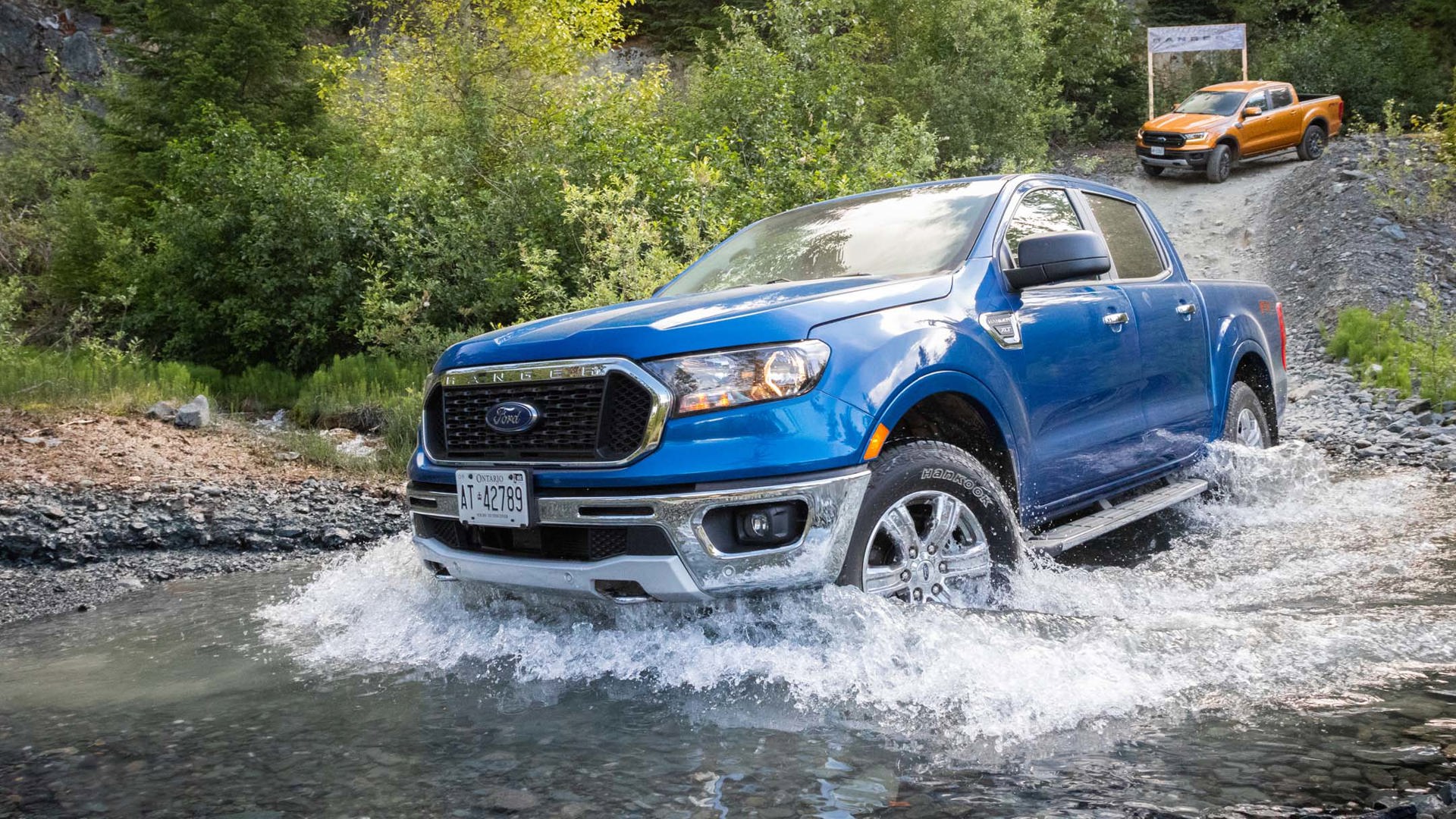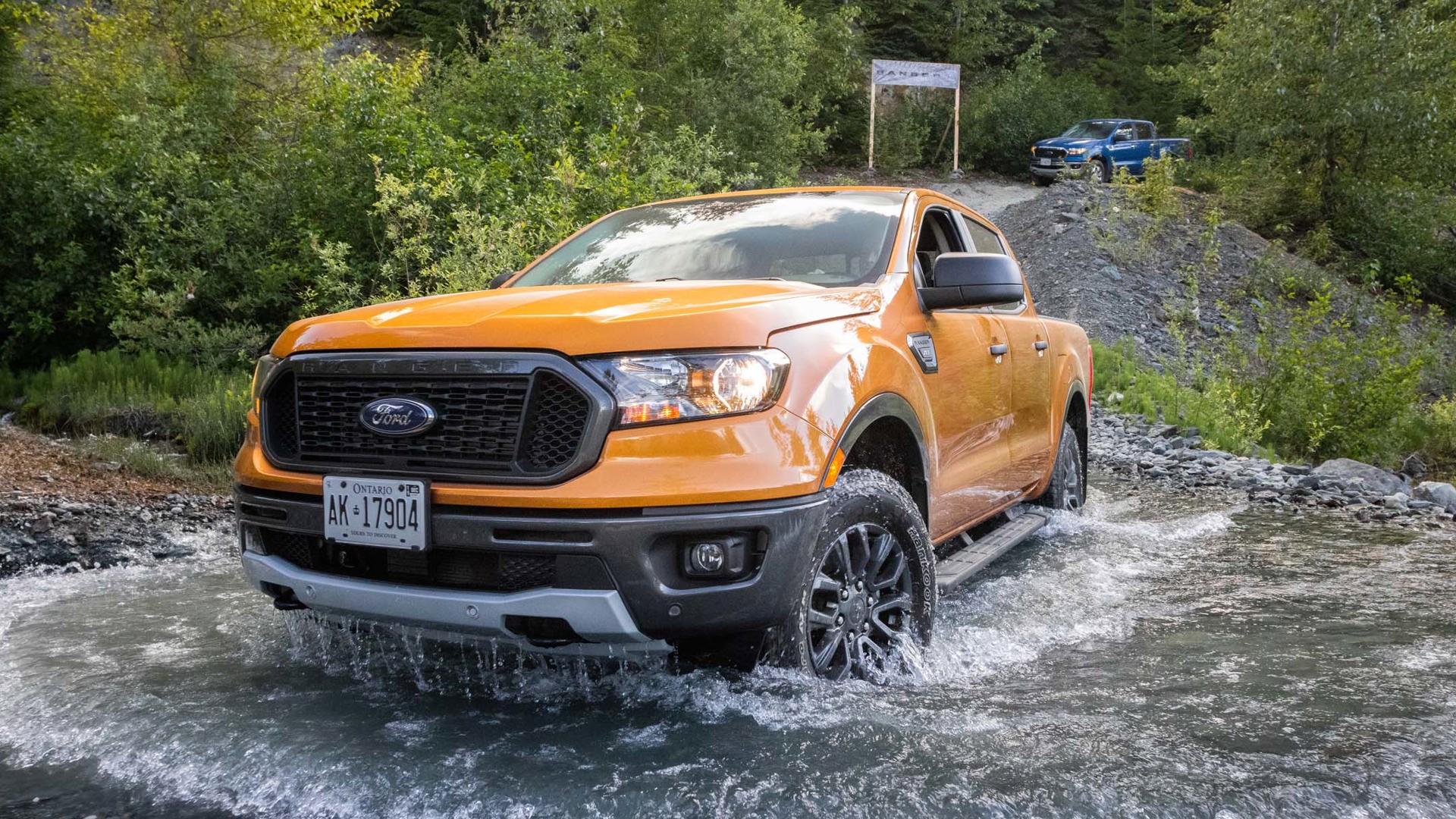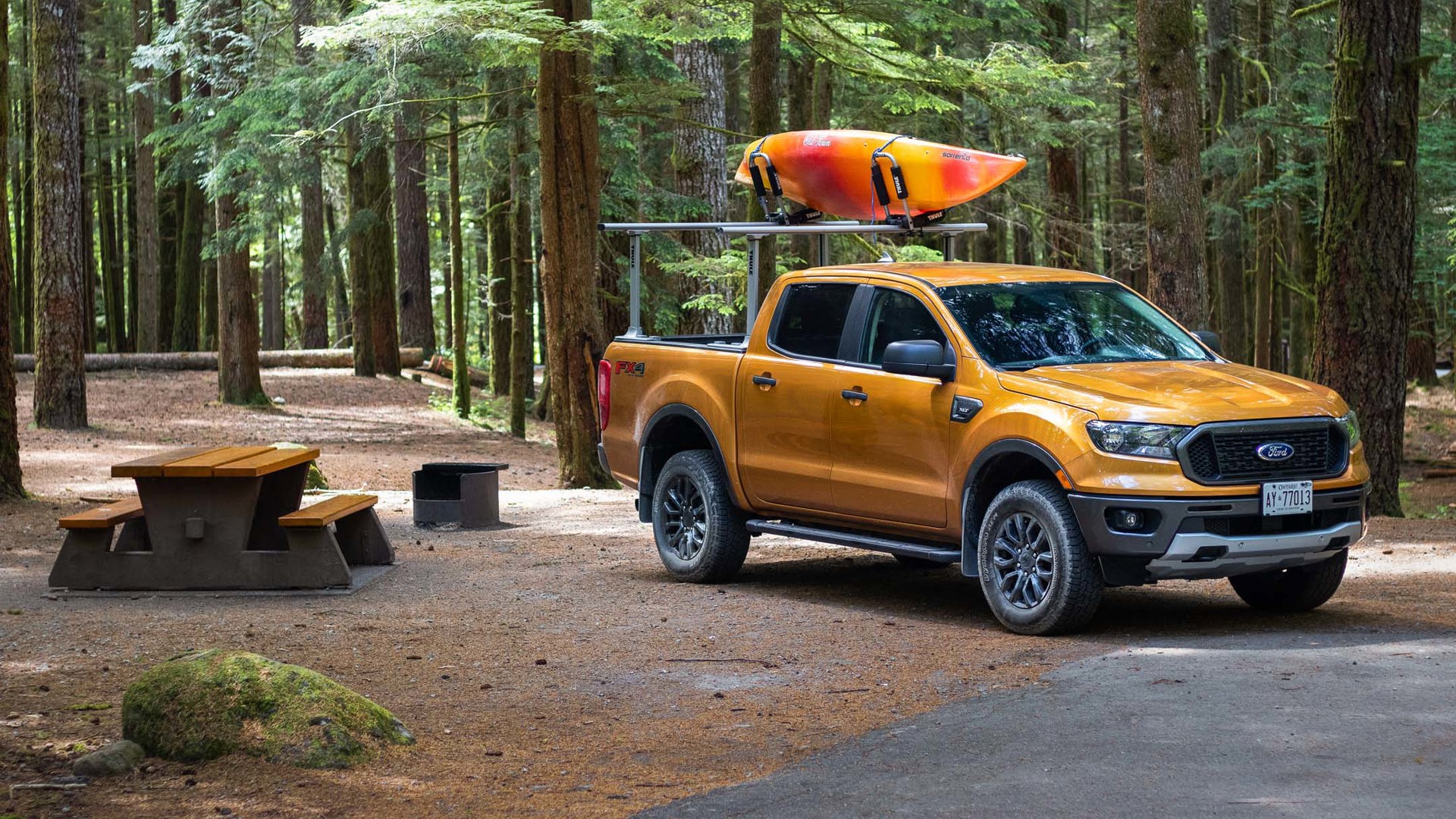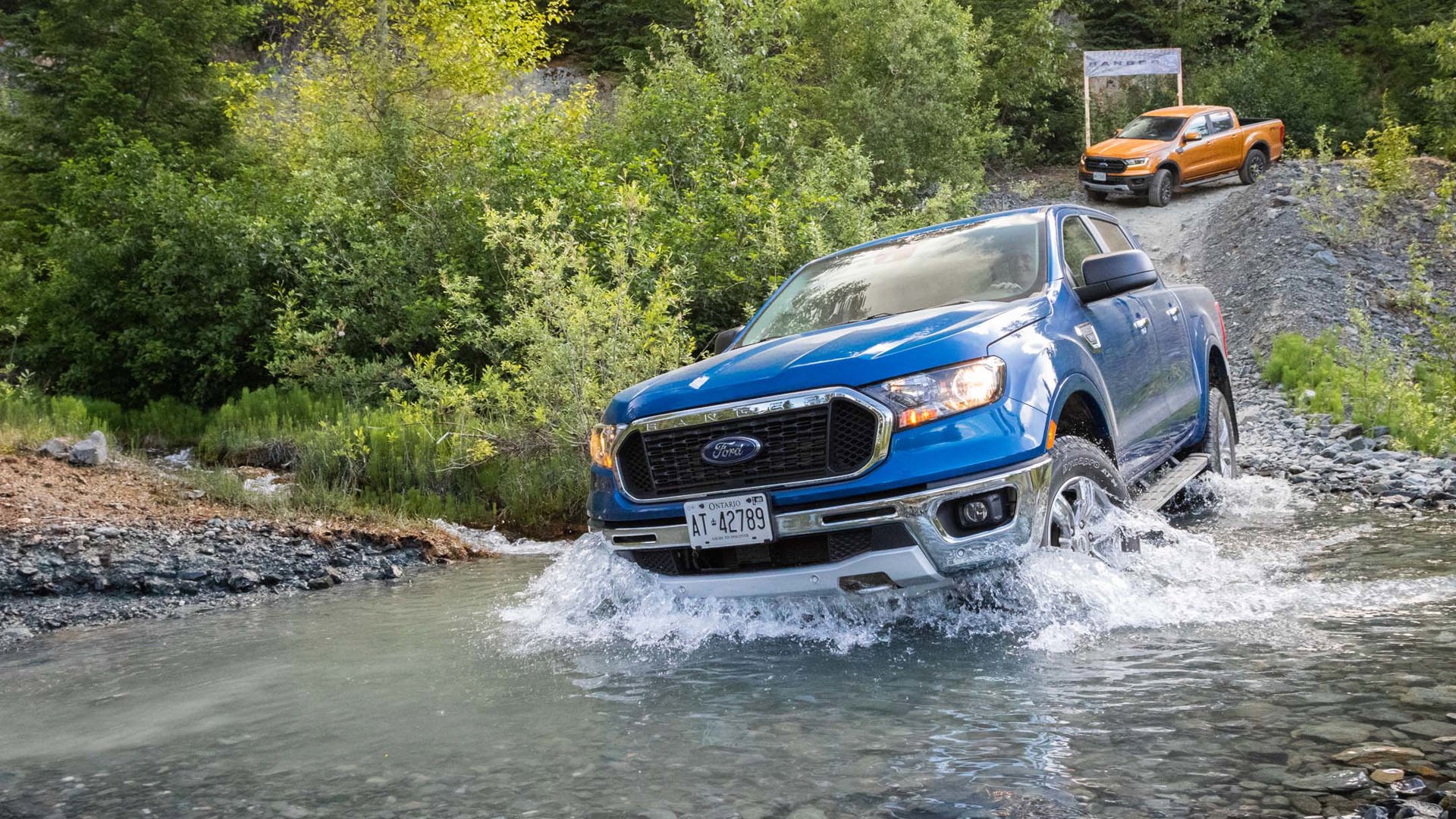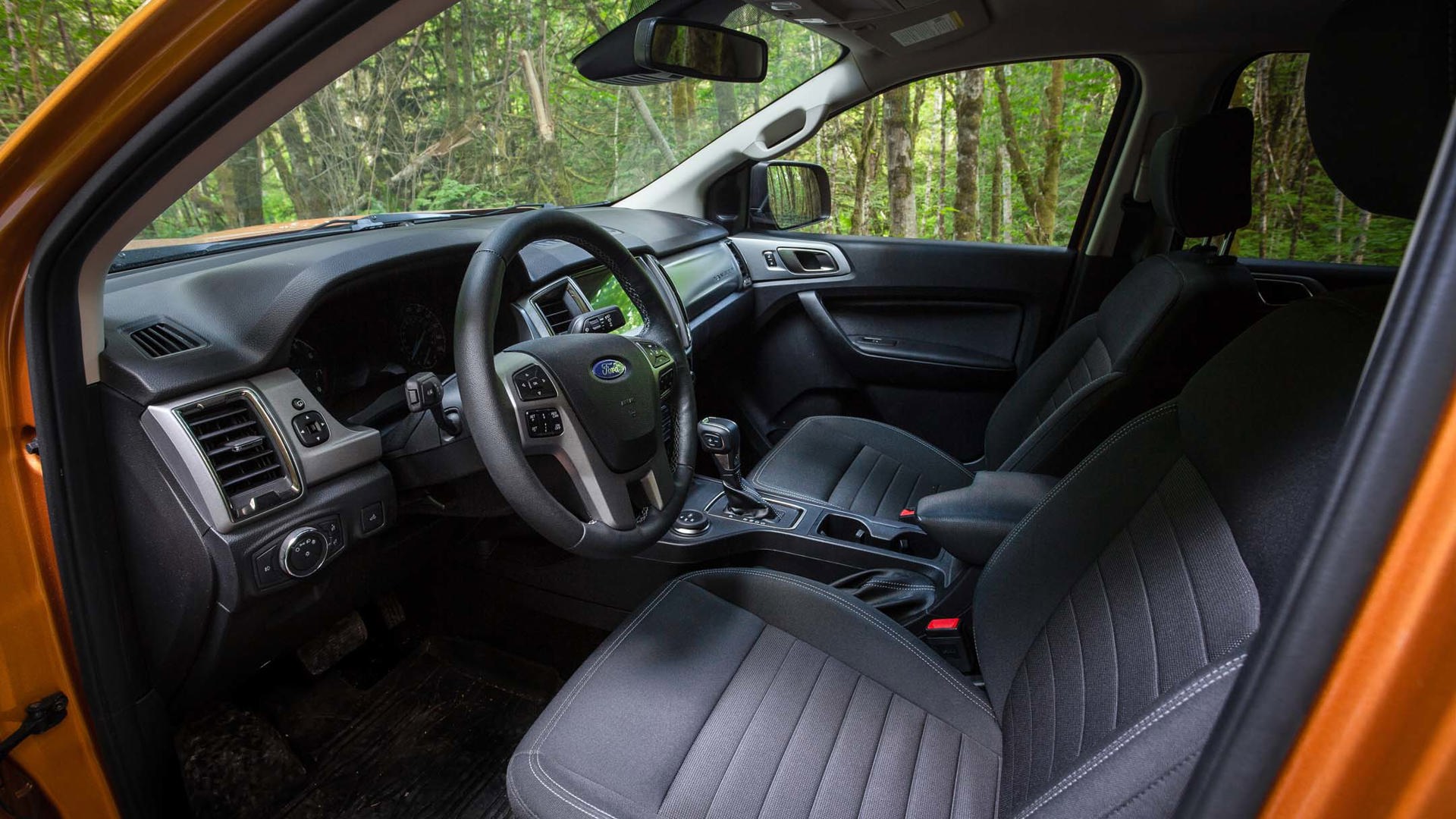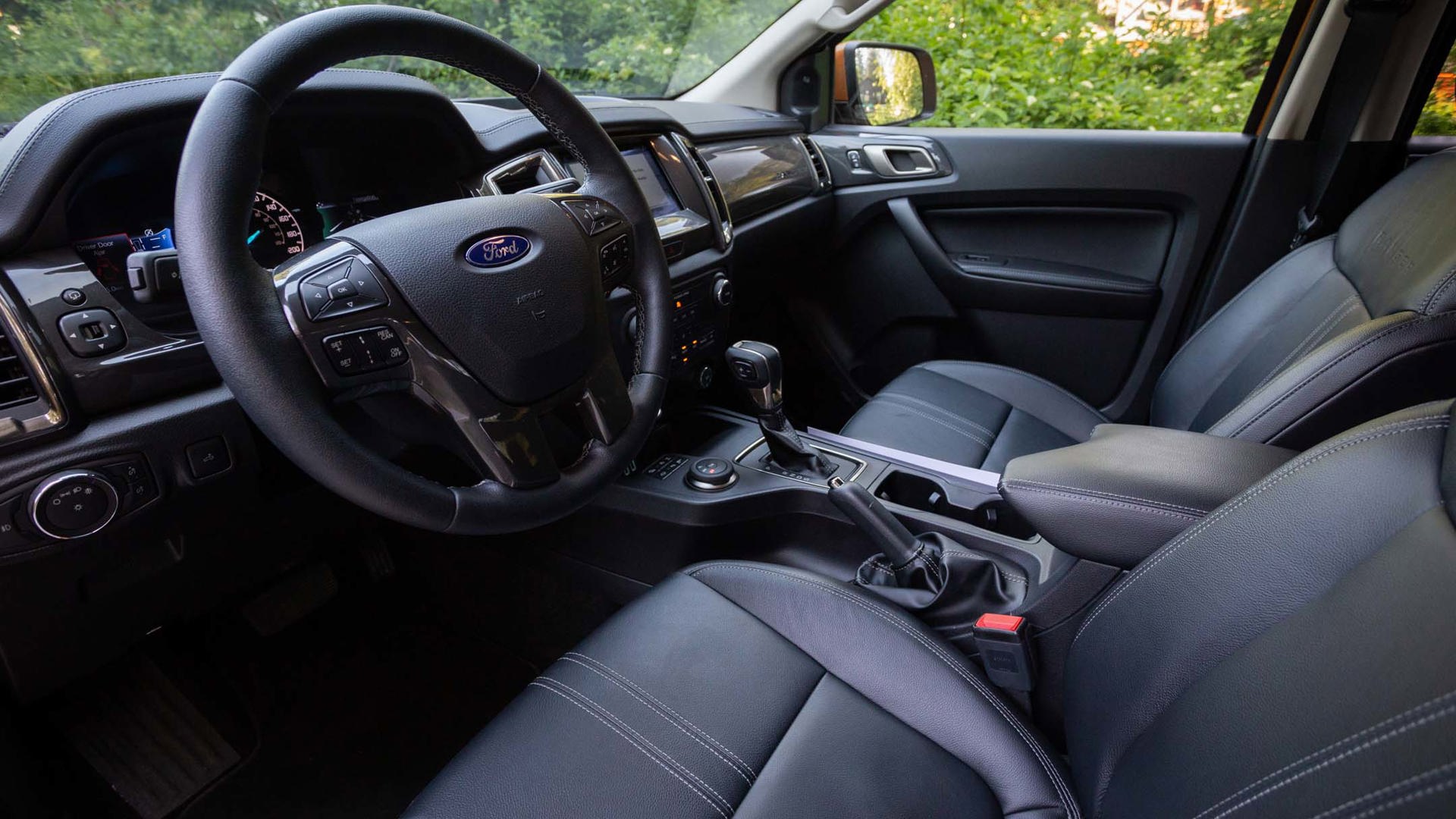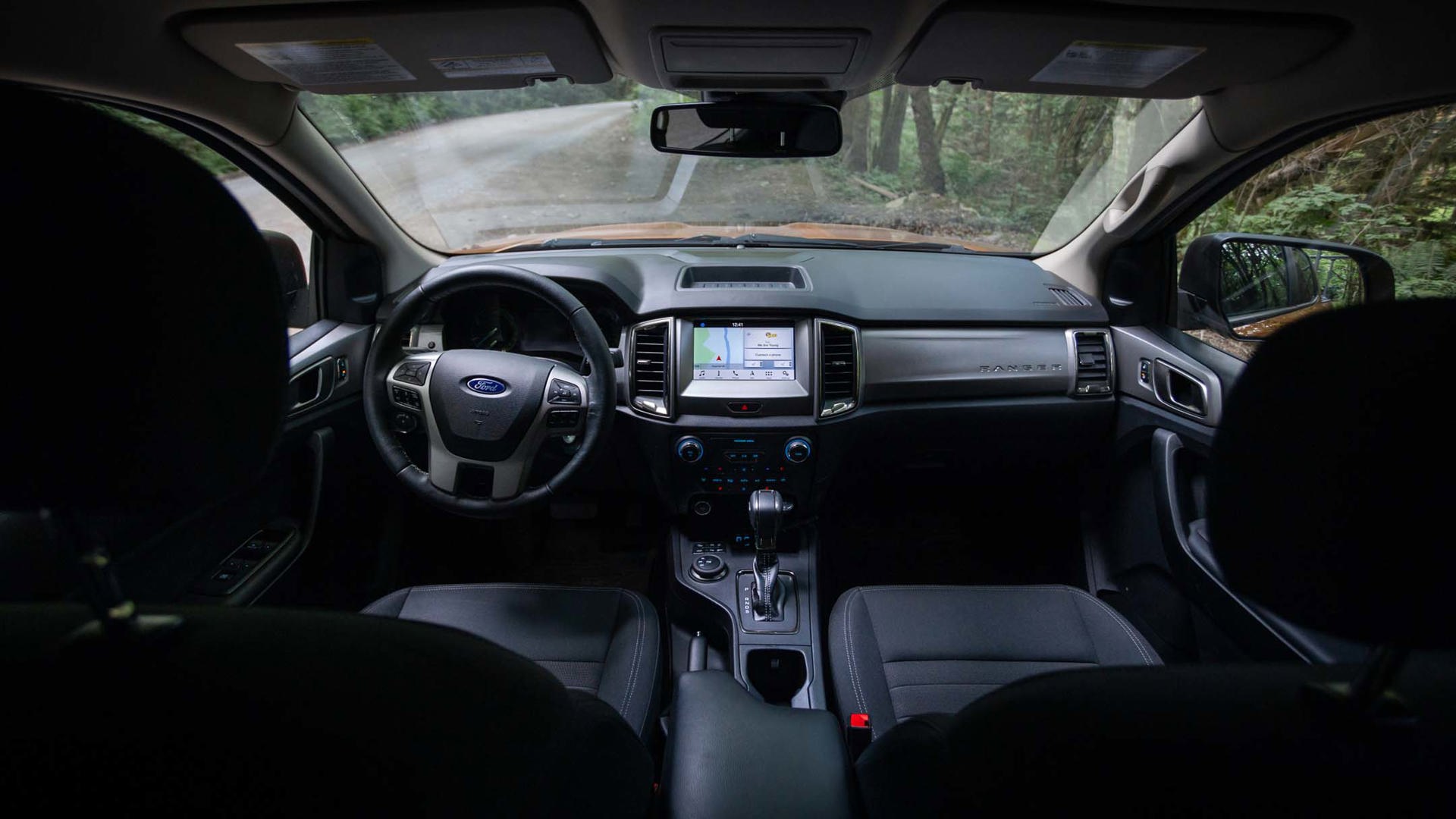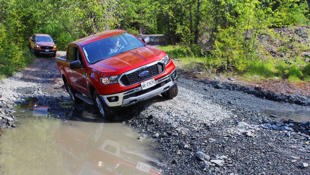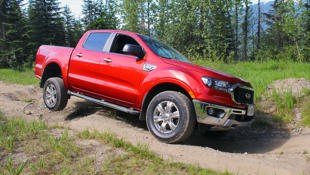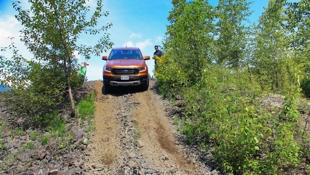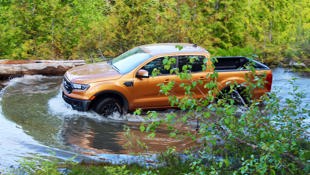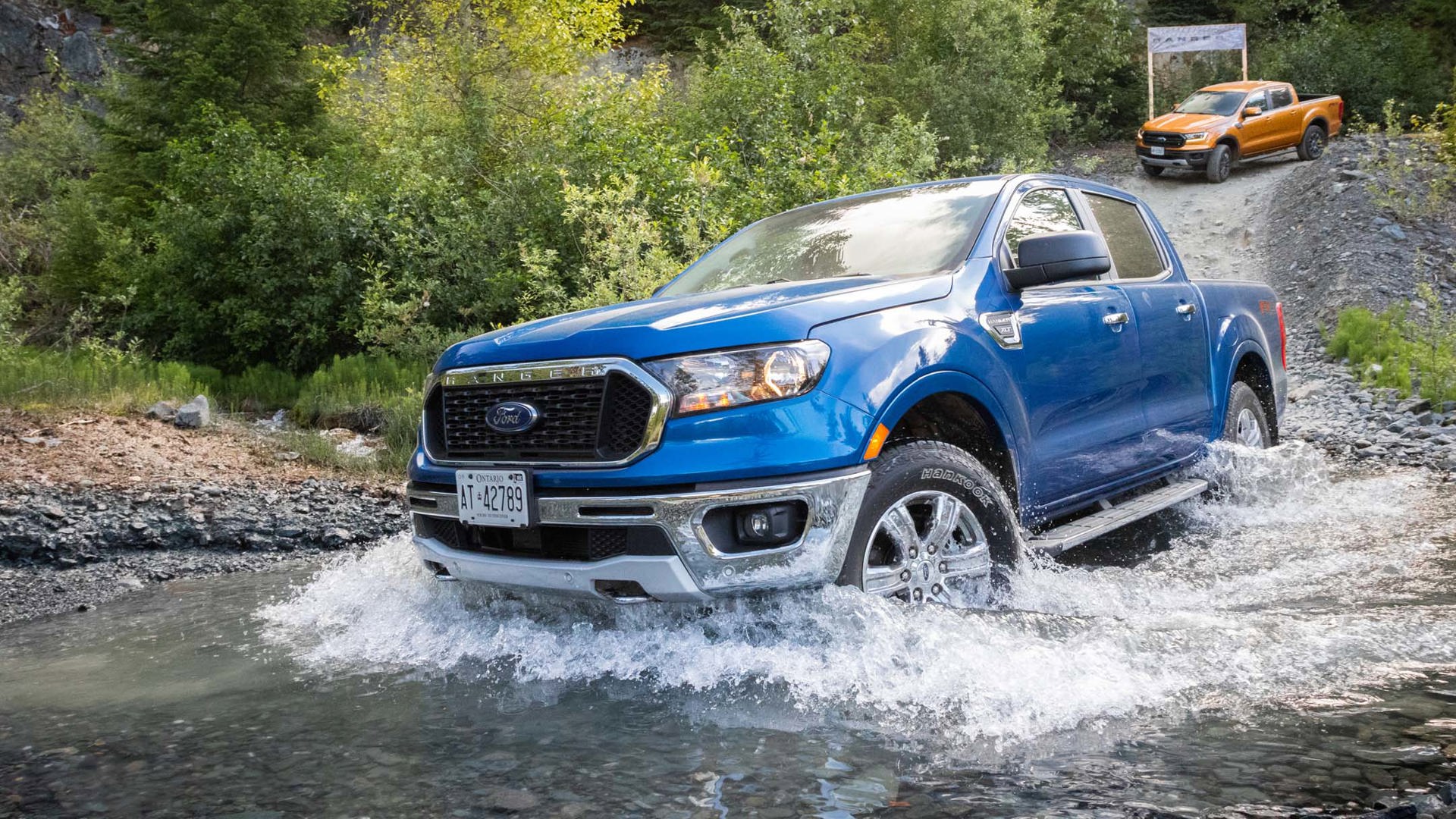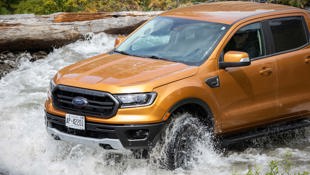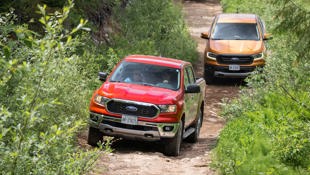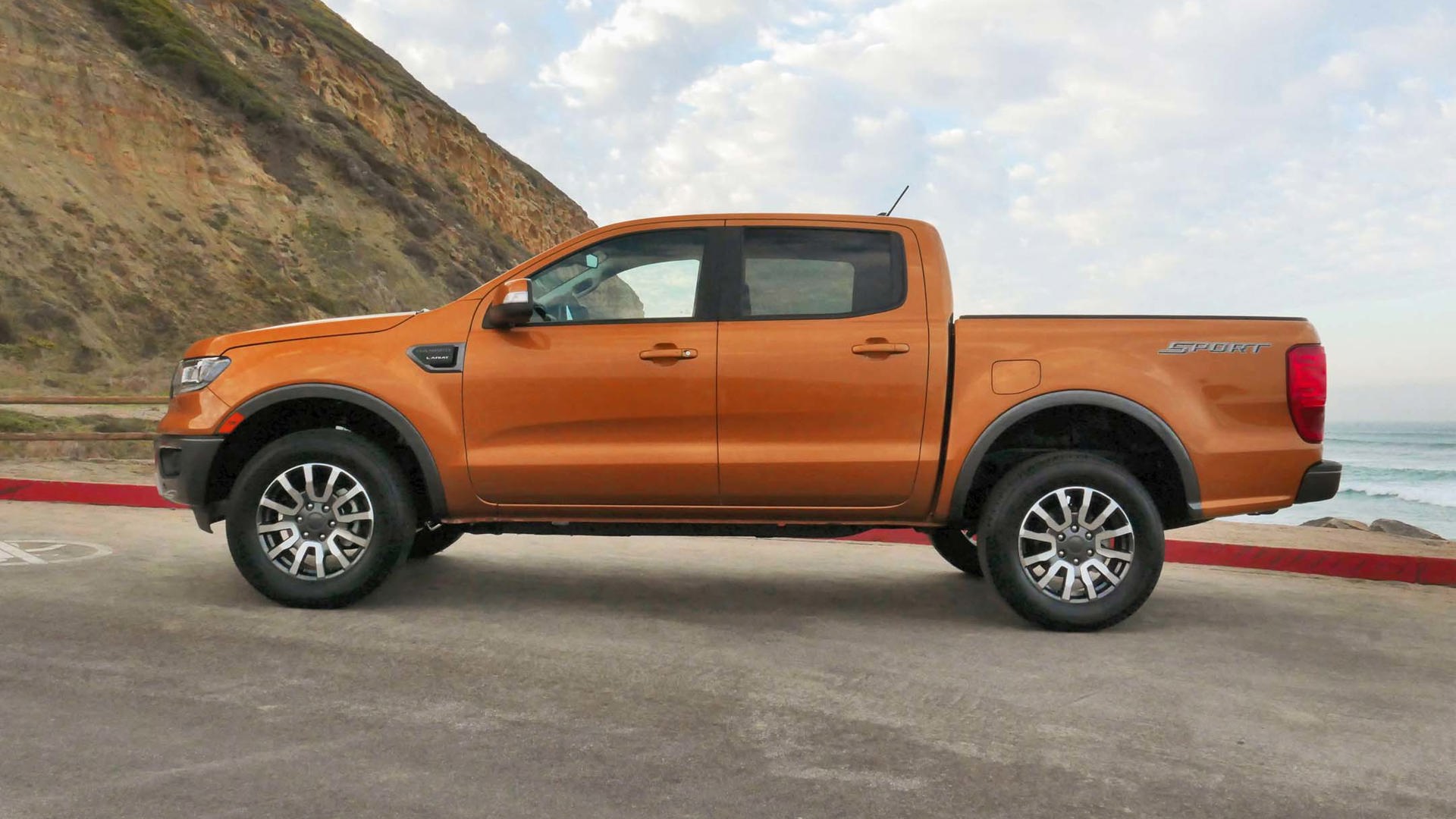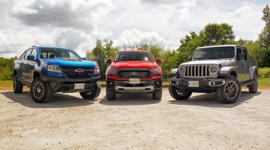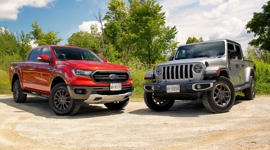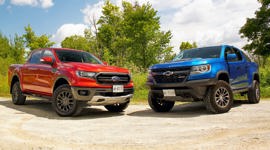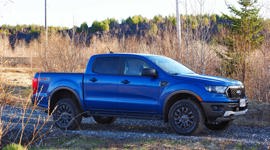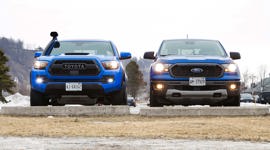Whistler may a choice destination for moneyed skiers and those seeking multi-million-dollar vacation homes, but stray too far from the groomed trails and five-star resorts and you’ll find endless tracts of Crown land, criss-crossed by old mining and logging roads that hark back to another era. Before gondolas and spas, people came here for the gold and lumber.
This little truck ain’t no poseur.
I’m crawling up one of these old mining roads in a 2019 Ford Ranger pickup. It’s dusty, the mosquitos are swarming, we’re told to watch for bears, but no one is complaining. Neither is the Ranger, equipped as it is with the $1,400 FX4 off-road package that turns this little tyke into quite a scrambler.
With this 2019 Ranger, Ford re-enters the compact pickup fray after a taking a bit of a hiatus. The previous-generation Ranger, which had been around for about twelve years, ended production in 2011, and while this all-new Australian-developed Ranger launched in 2013, it’s just getting its North American debut after seeing numerous tweaks and upgrades for our market.
The key bits that differentiate our Ranger from others are its 2.3L EcoBoost four-cylinder engine (270 hp, 310 lb-ft) and 10-speed automatic transmission – the only engine/transmission combo on offer. Auto stop-start is standard.
All Canadian Rangers are equipped with electronic shift-on-the-fly four-wheel drive (2H, 4H, and 4L). Additionally, our Rangers get aluminum hoods, fenders, and tailgates – aluminum saves weight, thus increasing payload and towing capacity. Ford’s experience with building the aluminum F-150 pickup made this a viable upgrade for the Detroit-built Ranger.
While eighty percent of Ford North America’s profitability come from the mighty F-150, the compact truck market is expanding. Toyota’s Tacoma is the segment champ, with the Chevy Colorado running in second spot. Ford hopes to gain some ground with this new Ranger.
It certainly is a handsome rig, and whether on the highway or around town the drivetrain works with refined, unstressed harmony. The turbo-four is smooth and torquey, and the 10-speed swaps cogs with imperceptible precision, keeping the engine mostly in its sweet spot without drawing attention to itself. The ride can get a bit bouncy though, but that could be due to the special monotube shocks that are part of the FX4 package.
Bouncy (in a good way) is certainly the key word up here on these narrow, rutted, and rock-strewn tracks. Along with the monotube shocks, the FX4 package also bestows the following: all-terrain tires; an exposed steel front bash plate; additional skids plates for the power steering electric motor, transfer case, and fuel tank; electronic locking rear differential; a display showing pitch, roll, steering angle; plus off-road focussed electronic stability control systems – Terrain Management and Trail Control.
On the Ranger, Terrain Management has settings for grass/gravel/snow, mud/ruts, and sand; while Terrain Control is like a cruise control for nasty conditions, automatically managing acceleration and braking for both ascent and descent. The speed can be set in 1.6 km/h (1 mph) increments from 1.6 km/h to 32 km/h. The Ranger’s ride height remains the same with the FX4 package, which means 8.9 inches of ground clearance, 28.7 degree approach angle, 21.5 degree breakover angle and 25.4 degree departure angle.
While the 2019 Ranger starts at $30,569 for the XL Super Cab (with 6-foot box) on steel wheels, I’m driving a mid-trim Ranger XLT Sport 4x4 Crew Cab (5-foot box) that with options checks in at $45,409. And I’m loving this burnt-orange Saber paint. Move up to the Lariat and you’re getting leather, nicer trim, LED headlights, upgraded instrument display, and more.
In 4H (four-wheel drive high) the Ranger makes its way up the hill with no fuss. The steering is sharp and direct, and the throttle easy to modulate – there’s no surging to suggest this is a turbocharged engine. The transmission also adheres to the right mapping for these conditions.
I’ve done enough of these off-road press events to know that we will all come away from this Ranger experience fairly gobsmacked at the vehicle’s capability. This little truck ain’t no poseur. It will cock its rear wheel like a Spaniel at a hydrant, and with the Trail Control on duty (we had it set at 3 km/h) the XLT crawled up and down some serious inclines, helped in no small part by these Hankook Dynapro all-terrain tires. Throw in some impressively splashy water features and the deal is done. Short of nutty rock crawling, it’s safe to assume the Ranger FX4 will handle just about anything you can throw at it. And in these conditions, its tidy dimensions are a plus.
The Ranger’s cabin looks a bit aged, what with all the acres of hard plastic, and it does lack glove-friendly rotary HVAC controls, making do with hard-to-see and -operate buttons. But Ford’s Sync3 interface (part of the $850 Technology Package that also adds adaptive cruise, SiriusXM, and nav) is one of the better touchscreen systems available, and you’ll find the driving position and outward visibility excellent. Standard Ford Co-Pilot 360 driver aid provides front collision warning/mitigation with pedestrian detection. The XLT also gets rear cross-traffic alert, blind spot detection, and Trailer Tow Coverage that automatically factors in the length of your trailer when giving blind spot warnings. As would be expected, all modern connectivity features are covered, including available 4G Wi-Fi hotspot and remote smartphone vehicle access via the FordPass app.
With full-size pickups getting ever more gargantuan, there is a case to made for these more reasonably proportioned units – if ultimate hauling is not your first priority. The fact that the Ranger has best-in-class towing capacity of 7,500 lb doesn’t leave it off the menu for those with boats or a horse. Now all it has to do is climb up the sales charts as easily as clawing up these old log roads.
